§ 1030.3 General disclosure requirements.
This version is the current regulation
Regulation DD
(a) Form. Depository institutions shall make the disclosures required by §§ 1030.4 through 1030.6 of this part, as applicable, clearly and conspicuously, in writing, and in a form the consumer may keep. The disclosures required by this part may be provided to the consumer in electronic form, subject to compliance with the consumer consent and other applicable provisions of the Electronic Signatures in Global and National Commerce Act (E-Sign Act) (15 U.S.C. 7001 et seq.). The disclosures required by §§ 1030.4(a)(2) and 1030.8 may be provided to the consumer in electronic form without regard to the consumer consent or other provisions of the E-Sign Act in the circumstances set forth in those sections. Disclosures for each account offered by an institution may be presented separately or combined with disclosures for the institution’s other accounts, as long as it is clear which disclosures are applicable to the consumer’s account.
1. Design requirements. Disclosures must be presented in a format that allows consumers to readily understand the terms of their account. Institutions are not required to use a particular type size or typeface, nor are institutions required to state any term more conspicuously than any other term. Disclosures may be made:
i. In any order.
ii. In combination with other disclosures or account terms.
iii. In combination with disclosures for other types of accounts, as long as it is clear to consumers which disclosures apply to their account.
iv. On more than one page and on the front and reverse sides.
v. By using inserts to a document or filling in blanks.
vi. On more than one document, as long as the documents are provided at the same time.
2. Consistent terminology. Institutions must use consistent terminology to describe terms or features required to be disclosed. For example, if an institution describes a monthly fee (regardless of account activity) as a “monthly service fee” in account-opening disclosures, the periodic statement and change-in-term notices must use the same terminology so that consumers can readily identify the fee.
See interpretation of 3(a) Form. in Supplement I
(b) General. The disclosures shall reflect the terms of the legal obligation of the account agreement between the consumer and the depository institution. Disclosures may be made in languages other than English, provided the disclosures are available in English upon request.
1. Specificity of legal obligation. Institutions may refer to the calendar month or to roughly equivalent intervals during a calendar year as a “month. ”
”
See interpretation of 3(b) General. in Supplement I
(c) Relation to Regulation E (12 CFR Part 1005). Disclosures required by and provided in accordance with the Electronic Fund Transfer Act (15 U.S.C. 1693 et seq.) and its implementing Regulation E (12 CFR Part 1005) that are also required by this part may be substituted for the disclosures required by this part.
1. General rule. Compliance with Regulation E (12 CFR Part 1005) is deemed to satisfy the disclosure requirements of this part, such as when:
i. An institution changes a term that triggers a notice under Regulation E, and uses the timing and disclosure rules of Regulation E for sending change-in-term notices.
ii. Consumers add an ATM access feature to an account, and the institution provides disclosures pursuant to Regulation E, including disclosure of fees (see 12 CFR 1005. 7.)
7.)
iii. An institution complying with the timing rules of Regulation E discloses at the same time fees for electronic services (such as for balance inquiry fees at ATMs) required to be disclosed by this part but not by Regulation E.
iv. An institution relies on Regulation E’s rules regarding disclosure of limitations on the frequency and amount of electronic fund transfers, including security-related exceptions. But any limitations on “intra-institutional transfers” to or from the consumer’s other accounts during a given time period must be disclosed, even though intra-institutional transfers are exempt from Regulation E.
See interpretation of 3(c) Relation to Regulation E. in Supplement I
(d) Multiple consumers. If an account is held by more than one consumer, disclosures may be made to any one of the consumers.
(e) Oral response to inquiries. In an oral response to a consumer’s inquiry about interest rates payable on its accounts, the depository institution shall state the annual percentage yield. The interest rate may be stated in addition to the annual percentage yield. No other rate may be stated.
In an oral response to a consumer’s inquiry about interest rates payable on its accounts, the depository institution shall state the annual percentage yield. The interest rate may be stated in addition to the annual percentage yield. No other rate may be stated.
1. Application of rule. Institutions are not required to provide rate information orally.
2. Relation to advertising. The advertising rules do not cover an oral response to a question about rates.
3. Existing accounts. This paragraph does not apply to oral responses about rate information for existing accounts. For example, if a consumer holding a one-year certificate of deposit (CD) requests interest rate information about the CD during the term, the institution need not disclose the annual percentage yield.
See interpretation of 3(e) Oral response to inquiries. in Supplement I
(f) Rounding and accuracy rules for rates and yields —
See interpretation of 3(f) Rounding and accuracy rules for rates and yields in Supplement I
(1) Rounding. The annual percentage yield, the annual percentage yield earned, and the interest rate shall be rounded to the nearest one-hundredth of one percentage point (.01%) and expressed to two decimal places. For account disclosures, the interest rate may be expressed to more than two decimal places.
The annual percentage yield, the annual percentage yield earned, and the interest rate shall be rounded to the nearest one-hundredth of one percentage point (.01%) and expressed to two decimal places. For account disclosures, the interest rate may be expressed to more than two decimal places.
1. Permissible rounding. Examples of permissible rounding are an annual percentage yield calculated to be 5.644%, rounded down and disclosed as 5.64%; 5.645% rounded up and disclosed as 5.65%.
See interpretation of 3(f)(1) Rounding. in Supplement I
(2) Accuracy. The annual percentage yield (and the annual percentage yield earned) will be considered accurate if not more than one-twentieth of one percentage point (.05%) above or below the annual percentage yield (and the annual percentage yield earned) determined in accordance with the rules in appendix A of this part.
1. Annual percentage yield and annual percentage yield earned. The tolerance for annual percentage yield and annual percentage yield earned calculations is designed to accommodate inadvertent errors. Institutions may not purposely incorporate the tolerance into their calculation of yields.
Annual percentage yield and annual percentage yield earned. The tolerance for annual percentage yield and annual percentage yield earned calculations is designed to accommodate inadvertent errors. Institutions may not purposely incorporate the tolerance into their calculation of yields.
See interpretation of 3(f)(2) Accuracy. in Supplement I
18 U.S. Code § 1030 — Fraud and related activity in connection with computers | U.S. Code | US Law
References in Text
Section 11 of the Atomic Energy Act of 1954, referred to in subsec. (a)(1), is classified to section 2014 of Title 42, The Public Health and Welfare.
Section 1602(n) of title 15, referred to in subsec. (a)(2)(A), was redesignated section 1602(o) of title 15 by Pub. L. 111–203, title X, § 1100A(1)(A), July 21, 2010, 124 Stat. 2107.
The Fair Credit Reporting Act, referred to in subsec. (a)(2)(A), is title VI of Pub. L. 90–321, as added by Pub. L. 91–508, title VI, § 601, Oct. 26, 1970, 84 Stat. 1127, as amended, which is classified generally to subchapter III (§ 1681 et seq.) of chapter 41 of Title 15, Commerce and Trade. For complete classification of this Act to the Code, see Short Title note set out under section 1601 of Title 15 and Tables.
L. 91–508, title VI, § 601, Oct. 26, 1970, 84 Stat. 1127, as amended, which is classified generally to subchapter III (§ 1681 et seq.) of chapter 41 of Title 15, Commerce and Trade. For complete classification of this Act to the Code, see Short Title note set out under section 1601 of Title 15 and Tables.
The Farm Credit Act of 1971, referred to in subsec. (e)(4)(E), is Pub. L. 92–181, Dec. 10, 1971, 85 Stat. 583, as amended, which is classified generally to chapter 23 (§ 2001 et seq.) of Title 12, Banks and Banking. For complete classification of this Act to the Code, see Short Title note set out under section 2001 of Title 12 and Tables.
Section 15 of the Securities Exchange Act of 1934, referred to in subsec. (e)(4)(F), is classified to section 78o of Title 15, Commerce and Trade.
Section 1(b) of the International Banking Act of 1978, referred to in subsec. (e)(4)(H), is classified to section 3101 of Title 12, Banks and Banking.
Section 25 of the Federal Reserve Act, referred to in subsec. (e)(4)(I), is classified to subchapter I (§ 601 et seq.) of chapter 6 of Title 12. Section 25(a) of the Federal Reserve Act, which is classified to subchapter II (§ 611 et seq.) of chapter 6 of Title 12, was renumbered section 25A of that act by Pub. L. 102–242, title I, § 142(e)(2), Dec. 19, 1991, 105 Stat. 2281.
(e)(4)(I), is classified to subchapter I (§ 601 et seq.) of chapter 6 of Title 12. Section 25(a) of the Federal Reserve Act, which is classified to subchapter II (§ 611 et seq.) of chapter 6 of Title 12, was renumbered section 25A of that act by Pub. L. 102–242, title I, § 142(e)(2), Dec. 19, 1991, 105 Stat. 2281.
The date of the enactment of this subsection, referred to in subsec. (h), is the date of enactment of Pub. L. 103–322, which was approved Sept. 13, 1994.
Amendments
2020—Subsec. (e)(2)(C). Pub. L. 116–179, § 2(1), added subpar. (C).
Subsec. (e)(13), (14). Pub. L. 116–179, § 2(2)–(4), added pars. (13) and (14).
2008—Subsec. (a)(2)(C). Pub. L. 110–326, § 203, struck out “if the conduct involved an interstate or foreign communication” after “computer”.
Subsec. (a)(5). Pub. L. 110–326, § 204(a)(1), redesignated cls. (i) to (iii) of subpar. (A) as subpars. (A) to (C), respectively, substituted “damage and loss.” for “damage; and” in subpar. (C), and struck out former subpar. (B) which read as follows:
(C), and struck out former subpar. (B) which read as follows:
“(B) by conduct described in clause (i), (ii), or (iii) of subparagraph (A), caused (or, in the case of an attempted offense, would, if completed, have caused)—
“(i) loss to 1 or more persons during any 1-year period (and, for purposes of an investigation, prosecution, or other proceeding brought by the United States only, loss resulting from a related course of conduct affecting 1 or more other protected computers) aggregating at least $5,000 in value;
“(ii) the modification or impairment, or potential modification or impairment, of the medical examination, diagnosis, treatment, or care of 1 or more individuals;
“(iii) physical injury to any person;
“(iv) a threat to public health or safety; or
“(v) damage affecting a computer system used by or for a government entity in furtherance of the administration of justice, national defense, or national security;”.
Subsec. (a)(7). Pub. L. 110–326, § 205, amended par.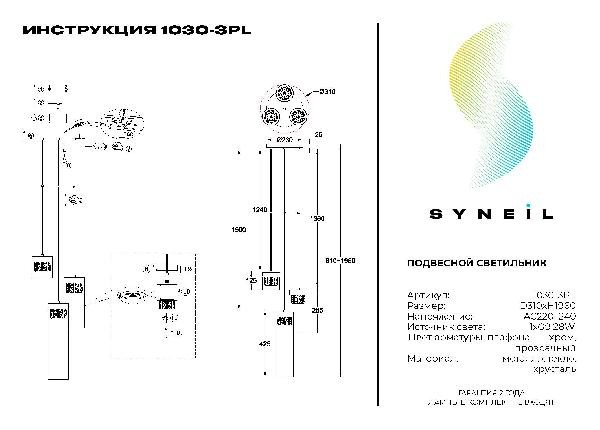 (7) generally. Prior to amendment, par. (7) read as follows: “with intent to extort from any person any money or other thing of value, transmits in interstate or foreign commerce any communication containing any threat to cause damage to a protected computer;”.
(7) generally. Prior to amendment, par. (7) read as follows: “with intent to extort from any person any money or other thing of value, transmits in interstate or foreign commerce any communication containing any threat to cause damage to a protected computer;”.
Subsec. (b). Pub. L. 110–326, § 206, inserted “conspires to commit or” after “Whoever”.
Subsec. (c)(2)(A). Pub. L. 110–326, § 204(a)(2)(A), struck out “(a)(5)(A)(iii),” after “(a)(3),”.
Subsec. (c)(3)(B). Pub. L. 110–326, § 204(a)(2)(B), struck out “(a)(5)(A)(iii),” after “(a)(4),”.
Subsec. (c)(4). Pub. L. 110–326, § 204(a)(2)(C), amended par. (4) generally. Prior to amendment, par. (4) related to fines and imprisonment for intentionally or recklessly causing damage to a protected computer without authorization.
Subsec. (c)(5). Pub. L. 110–326, § 204(a)(2)(D), struck out par. (5) which related to fine or imprisonment for knowingly or recklessly causing or attempting to cause serious bodily injury or death from certain conduct damaging a protected computer.
Subsec. (e)(2)(B). Pub. L. 110–326, § 207, inserted “or affecting” after “which is used in”.
Subsec. (g). Pub. L. 110–326, § 204(a)(3)(B), in the third sentence, substituted “subsection (c)(4)(A)(i)(I)” for “subsection (a)(5)(B)(i)”.
Pub. L. 110–326, § 204(a)(3)(A), which directed substitution of “in subclauses (I), (II), (III), (IV), or (V) of subsection (c)(4)(A)(i)” for “in clauses (i), (ii), (iii), (iv), or (v) of subsection (a)(5)(B)” in the second sentence, was executed by making the substitution for “in clause (i), (ii), (iii), (iv), or (v) of subsection (a)(5)(B)” to reflect the probable intent of Congress.
Subsecs. (i), (j). Pub. L. 110–326, § 208, added subsecs. (i) and (j).
2002—Subsec. (a)(5)(B). Pub. L. 107–273, § 4005(a)(3), realigned margins.
Subsec. (c)(2)(B). Pub. L. 107–273, § 4002(b)(1), realigned margins.
Subsec. (c)(2)(B)(iii). Pub. L. 107–273, § 4002(b)(12)(A), inserted “and” at end.
Subsec. (c)(3)(B). Pub. L. 107–273, § 4005(d)(3), inserted comma after “(a)(4)”.
Subsec. (c)(4)(A), (C). Pub. L. 107–296, § 2207(g)(2), formerly § 225(g)(2), as renumbered by Pub. L. 115–278, § 2(g)(2)(I), inserted “except as provided in paragraph (5),” before “a fine under this title”.
Subsec. (c)(5). Pub. L. 107–296, § 2207(g)(1), (3), (4), formerly § 225(g)(1), (3), (4), as renumbered by Pub. L. 115–278, § 2(g)(2)(I), added par. (5).
Subsec. (e)(4)(I). Pub. L. 107–273, § 4002(b)(12)(B), substituted semicolon for period at end.
2001—Subsec. (a)(5)(A). Pub. L. 107–56, § 814(a)(1)–(3), designated existing provisions as cl. (i), redesignated subpars. (B) and (C) as cls. (ii) and (iii), respectively, of subpar. (A), and inserted “and” at end of cl. (iii).
Subsec. (a)(5)(B). Pub. L. 107–56, § 814(a)(4), added subpar. (B). Former subpar. (B) redesignated cl. (ii) of subpar. (A).
Subsec. (a)(5)(C). Pub. L. 107–56, § 814(a)(2), redesignated subpar. (C) as cl. (iii) of subpar. (A).
Subsec. (a)(7). Pub. L. 107–56, § 814(b), struck out “, firm, association, educational institution, financial institution, government entity, or other legal entity,” before “any money or other thing of value”.
Subsec. (c)(2)(A). Pub. L. 107–56, § 814(c)(1)(A), inserted “except as provided in subparagraph (B),” before “a fine”, substituted “(a)(5)(A)(iii)” for “(a)(5)(C)”, and struck out “and” at end.
Subsec. (c)(2)(B). Pub. L. 107–56, § 814(c)(1)(B), inserted “or an attempt to commit an offense punishable under this subparagraph,” after “subsection (a)(2),” in introductory provisions.
Subsec. (c)(2)(C). Pub. L. 107–56, § 814(c)(1)(C), struck out “and” at end.
Subsec. (c)(3). Pub. L. 107–56, § 814(c)(2), struck out “, (a)(5)(A), (a)(5)(B),” after “subsection (a)(4)” in subpars. (A) and (B) and substituted “(a)(5)(A)(iii)” for “(a)(5)(C)” in subpar. (B).
Subsec. (c)(4). Pub. L. 107–56, § 814(c)(3), added par. (4).
Subsec. (d). Pub. L. 107–56, § 506(a), amended subsec. (d) generally. Prior to amendment, subsec. (d) read as follows: “The United States Secret Service shall, in addition to any other agency having such authority, have the authority to investigate offenses under subsections (a)(2)(A), (a)(2)(B), (a)(3), (a)(4), (a)(5), and (a)(6) of this section. Such authority of the United States Secret Service shall be exercised in accordance with an agreement which shall be entered into by the Secretary of the Treasury and the Attorney General.”
Such authority of the United States Secret Service shall be exercised in accordance with an agreement which shall be entered into by the Secretary of the Treasury and the Attorney General.”
Subsec. (e)(2)(B). Pub. L. 107–56, § 814(d)(1), inserted “, including a computer located outside the United States that is used in a manner that affects interstate or foreign commerce or communication of the United States” before semicolon.
Subsec. (e)(7). Pub. L. 107–56, § 814(d)(2), struck out “and” at end.
Subsec. (e)(8). Pub. L. 107–56, § 814(d)(3), added par. (8) and struck out former par. (8) which read as follows: “the term ‘damage’ means any impairment to the integrity or availability of data, a program, a system, or information, that—
“(A) causes loss aggregating at least $5,000 in value during any 1-year period to one or more individuals;
“(B) modifies or impairs, or potentially modifies or impairs, the medical examination, diagnosis, treatment, or care of one or more individuals;
“(C) causes physical injury to any person; or
“(D) threatens public health or safety; and”.
Subsec. (e)(10) to (12). Pub. L. 107–56, § 814(d)(4), (5), added pars. (10) to (12).
Subsec. (g). Pub. L. 107–56, § 814(e), substituted “A civil action for a violation of this section may be brought only if the conduct involves 1 of the factors set forth in clause (i), (ii), (iii), (iv), or (v) of subsection (a)(5)(B). Damages for a violation involving only conduct described in subsection (a)(5)(B)(i) are limited to economic damages.” for “Damages for violations involving damage as defined in subsection (e)(8)(A) are limited to economic damages.” and inserted at end “No action may be brought under this subsection for the negligent design or manufacture of computer hardware, computer software, or firmware.”
1996—Subsec. (a)(1). Pub. L. 104–294, § 201(1)(A), substituted “having knowingly accessed” for “knowingly accesses”, “exceeding authorized access” for “exceeds authorized access”, “such conduct having obtained information” for “such conduct obtains information”, and “could be used to the injury of the United States” for “is to be used to the injury of the United States”, struck out “the intent or” before “reason to believe”, and inserted before semicolon at end “willfully communicates, delivers, transmits, or causes to be communicated, delivered, or transmitted, or attempts to communicate, deliver, transmit or cause to be communicated, delivered, or transmitted the same to any person not entitled to receive it, or willfully retains the same and fails to deliver it to the officer or employee of the United States entitled to receive it”.
Subsec. (a)(2). Pub. L. 104–294, § 201(1)(B), inserted dash after “thereby obtains”, redesignated remainder of par. (2) as subpar. (A), and added subpars. (B) and (C).
Subsec. (a)(3). Pub. L. 104–294, § 201(1)(C), inserted “nonpublic” before “computer of a department or agency”, struck out “adversely” after “and such conduct”, and substituted “that use by or for the Government of the United States” for “the use of the Government’s operation of such computer”.
Subsec. (a)(4). Pub. L. 104–294, § 201(1)(D), substituted “protected computer” for “Federal interest computer” and inserted “and the value of such use is not more than $5,000 in any 1-year period” before semicolon at end.
Subsec. (a)(5). Pub. L. 104–294, § 201(1)(E), inserted par. (5) and struck out former par. (5) which related to fraud in connection with computers in causing transmission of program, information, code, or command to a computer or computer system in interstate or foreign commerce which damages such system, program, information, or code, or causes a withholding or denial of use of hardware or software, or transmits viruses which causes damage in excess of $1,000 or more during any one-year period, or modifies or impairs medical examination, diagnosis, treatment or care of individuals.
Subsec. (a)(5)(B)(ii)(II)(bb). Pub. L. 104–294, § 604(b)(36)(A), which directed insertion of “or” at end of subsec., could not be executed because no subsec. (a)(5)(B)(ii)(II)(bb) existed subsequent to amendment by Pub. L. 104–294, § 201(1)(E). See above.
Subsec. (a)(7). Pub. L. 104–294, § 201(1)(F), added par. (7).
Subsec. (c)(1). Pub. L. 104–294, § 201(2)(A), substituted “under this section” for “under such subsection” in subpars. (A) and (B).
Subsec. (c)(1)(B). Pub. L. 104–294, § 604(b)(36)(B), struck out “and” after semicolon at end.
Subsec. (c)(2)(A). Pub. L. 104–294, § 201(2)(B)(i), inserted “, (a)(5)(C),” after “(a)(3)” and substituted “under this section” for “under such subsection”.
Subsec. (c)(2)(B). Pub. L. 104–294, § 201(2)(B)(iii), added subpar. (B). Former subpar. (B) redesignated (C).
Subsec. (c)(2)(C). Pub. L. 104–294, § 201(2)(B)(iv), substituted “under this section” for “under such subsection” and inserted “and” at end.
Pub.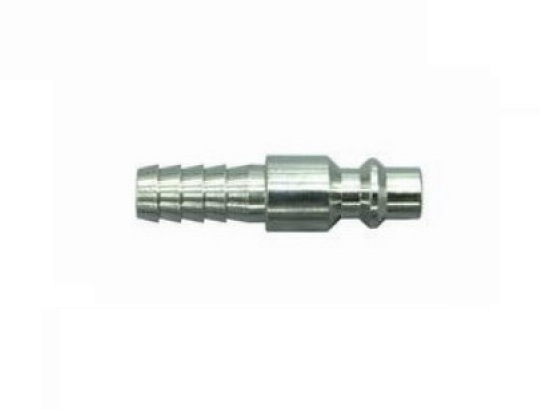 L. 104–294, § 201(2)(B)(ii), redesignated subpar. (B) as (C).
L. 104–294, § 201(2)(B)(ii), redesignated subpar. (B) as (C).
Subsec. (c)(3)(A). Pub. L. 104–294, § 201(2)(C)(i), substituted “(a)(4), (a)(5)(A), (a)(5)(B), or (a)(7)” for “(a)(4) or (a)(5)(A)” and “under this section” for “under such subsection”.
Subsec. (c)(3)(B). Pub. L. 104–294, § 201(2)(C)(ii), substituted “(a)(4), (a)(5)(A), (a)(5)(B), (a)(5)(C), or (a)(7)” for “(a)(4) or (a)(5)” and “under this section” for “under such subsection”.
Subsec. (c)(4). Pub. L. 104–294, § 201(2)(D), struck out par. (4) which read as follows: “a fine under this title or imprisonment for not more than 1 year, or both, in the case of an offense under subsection (a)(5)(B).”
Subsec. (d). Pub. L. 104–294, § 201(3), inserted “subsections (a)(2)(A), (a)(2)(B), (a)(3), (a)(4), (a)(5), and (a)(6) of” before “this section” in first sentence.
Subsec. (e)(2). Pub. L. 104–294, § 201(4)(A)(i), substituted “protected” for “Federal interest” in introductory provisions.
Subsec. (e)(2)(A). Pub. L. 104–294, § 201(4)(A)(ii), substituted “that use by or for the financial institution or the Government” for “the use of the financial institution’s operation or the Government’s operation of such computer”.
Pub. L. 104–294, § 201(4)(A)(ii), substituted “that use by or for the financial institution or the Government” for “the use of the financial institution’s operation or the Government’s operation of such computer”.
Subsec. (e)(2)(B). Pub. L. 104–294, § 201(4)(A)(iii), added subpar. (B) and struck out former subpar. (B) which read as follows: “which is one of two or more computers used in committing the offense, not all of which are located in the same State;”.
Subsec. (e)(8), (9). Pub. L. 104–294, § 201(4)(B)–(D), added pars. (8) and (9).
Subsec. (g). Pub. L. 104–294, § 604(b)(36)(C), substituted “violation of this section” for “violation of the section”.
Pub. L. 104–294, § 201(5), struck out “, other than a violation of subsection (a)(5)(B),” before “may maintain a civil action” and substituted “involving damage as defined in subsection (e)(8)(A)” for “of any subsection other than subsection (a)(5)(A)(ii)(II)(bb) or (a)(5)(B)(ii)(II)(bb)”.
Subsec. (h). Pub. L. 104–294, § 604(b)(36)(D), substituted “subsection (a)(5)” for “section 1030(a)(5) of title 18, United States Code” before period at end.
L. 104–294, § 604(b)(36)(D), substituted “subsection (a)(5)” for “section 1030(a)(5) of title 18, United States Code” before period at end.
1994—Subsec. (a)(3). Pub. L. 103–322, § 290001(f), inserted “adversely” before “affects the use of the Government’s”.
Subsec. (a)(5). Pub. L. 103–322, § 290001(b), amended par. (5) generally. Prior to amendment, par. (5) read as follows: “intentionally accesses a Federal interest computer without authorization, and by means of one or more instances of such conduct alters, damages, or destroys information in any such Federal interest computer, or prevents authorized use of any such computer or information, and thereby—
“(A) causes loss to one or more others of a value aggregating $1,000 or more during any one year period; or
“(B) modifies or impairs, or potentially modifies or impairs, the medical examination, medical diagnosis, medical treatment, or medical care of one or more individuals; or”.
Subsec. (c)(3)(A). Pub. L. 103–322, § 290001(c)(2), inserted “(A)” after “(a)(5)”.
103–322, § 290001(c)(2), inserted “(A)” after “(a)(5)”.
Subsec. (c)(4). Pub. L. 103–322, § 290001(c)(1), (3), (4), added par. (4).
Subsec. (g). Pub. L. 103–322, § 290001(d), added subsec. (g).
Subsec. (h). Pub. L. 103–322, § 290001(e), added subsec. (h).
1990—Subsec. (a)(1). Pub. L. 101–647, § 3533, substituted “paragraph y” for “paragraph r”.
Subsec. (e)(3). Pub. L. 101–647, § 1205(e), inserted “commonwealth,” before “possession or territory of the United States”.
Subsec. (e)(4)(G). Pub. L. 101–647, § 2597(j)(2), which directed substitution of a semicolon for a period at end of subpar. (G), could not be executed because it ended with a semicolon.
Subsec. (e)(4)(H), (I). Pub. L. 101–647, § 2597(j), added subpars. (H) and (I).
1989—Subsec. (e)(4)(A). Pub. L. 101–73, § 962(a)(5)(A), substituted “an institution,” for “a bank”.
Subsec. (e)(4)(C) to (H). Pub. L. 101–73, § 962(a)(5)(B), (C), redesignated subpars. (D) to (H) as (C) to (G), respectively, and struck out former subpar. (C) which read as follows: “an institution with accounts insured by the Federal Savings and Loan Insurance Corporation;”.
(C) which read as follows: “an institution with accounts insured by the Federal Savings and Loan Insurance Corporation;”.
1988—Subsec. (a)(2). Pub. L. 100–690 inserted a comma after “financial institution” and struck out the comma that followed a comma after “title 15”.
1986—Subsec. (a). Pub. L. 99–474, § 2(b)(2), struck out last sentence which read as follows: “It is not an offense under paragraph (2) or (3) of this subsection in the case of a person having accessed a computer with authorization and using the opportunity such access provides for purposes to which such access does not extend, if the using of such opportunity consists only of the use of the computer.”
Subsec. (a)(1). Pub. L. 99–474, § 2(c), substituted “or exceeds authorized access” for “, or having accessed a computer with authorization, uses the opportunity such access provides for purposes to which such authorization does not extend”.
Subsec. (a)(2). Pub. L. 99–474, § 2(a), (c), substituted “intentionally” for “knowingly”, substituted “or exceeds authorized access” for “, or having accessed a computer with authorization, uses the opportunity such access provides for purposes to which such authorization does not extend”, struck out “as such terms are defined in the Right to Financial Privacy Act of 1978 (12 U. S.C. 3401 et seq.),” after “financial institution,”, inserted “or of a card issuer as defined in section 1602(n) of title 15,” and struck out “or” appearing at end.
S.C. 3401 et seq.),” after “financial institution,”, inserted “or of a card issuer as defined in section 1602(n) of title 15,” and struck out “or” appearing at end.
Subsec. (a)(3). Pub. L. 99–474, § 2(b)(1), amended par. (3) generally. Prior to amendment, par. (3) read as follows: “knowingly accesses a computer without authorization, or having accessed a computer with authorization, uses the opportunity such access provides for purposes to which such authorization does not extend, and by means of such conduct knowingly uses, modifies, destroys, or discloses information in, or prevents authorized use of, such computer, if such computer is operated for or on behalf of the Government of the United States and such conduct affects such operation;”.
Subsec. (a)(4) to (6). Pub. L. 99–474, § 2(d), added pars. (4) to (6).
Subsec. (b). Pub. L. 99–474, § 2(e), struck out par. (1) designation and par. (2) which provided a penalty for persons conspiring to commit an offense under subsec. (a).
(a).
Subsec. (c). Pub. L. 99–474, § 2(f)(9), substituted “(b)” for “(b)(1)” in introductory text.
Subsec. (c)(1)(A). Pub. L. 99–474, § 2(f)(1), substituted “under this title” for “of not more than the greater of $10,000 or twice the value obtained by the offense”.
Subsec. (c)(1)(B). Pub. L. 99–474, § 2(f)(2), substituted “under this title” for “of not more than the greater of $100,000 or twice the value obtained by the offense”.
Subsec. (c)(2)(A). Pub. L. 99–474, § 2(f)(3), (4), substituted “under this title” for “of not more than the greater of $5,000 or twice the value obtained or loss created by the offense” and inserted reference to subsec. (a)(6).
Subsec. (c)(2)(B). Pub. L. 99–474, § 2(f)(3), (5)–(7), substituted “under this title” for “of not more than the greater of $10,000 or twice the value obtained or loss created by the offense”, “not more than” for “not than”, inserted reference to subsec. (a)(6), and substituted “; and” for the period at end of subpar. (B).
(B).
Subsec. (c)(3). Pub. L. 99–474, § 2(f)(8), added par. (3).
Subsec. (e). Pub. L. 99–474, § 2(g), substituted a dash for the comma after “As used in this section”, realigned remaining portion of subsection, inserted “(1)” before “the term”, substituted a semicolon for the period at the end, and added pars. (2) to (7).
Subsec. (f). Pub. L. 99–474, § 2(h), added subsec. (f).
Effective Date of 2002 Amendment
Amendment by Pub. L. 107–296 effective 60 days after Nov. 25, 2002, see section 4 of Pub. L. 107–296, set out as an Effective Date note under section 101 of Title 6, Domestic Security.
Transfer of Functions
For transfer of the functions, personnel, assets, and obligations of the United States Secret Service, including the functions of the Secretary of the Treasury relating thereto, to the Secretary of Homeland Security, and for treatment of related references, see sections 381, 551(d), 552(d), and 557 of Title 6, Domestic Security, and the Department of Homeland Security Reorganization Plan of November 25, 2002, as modified, set out as a note under section 542 of Title 6.
Reports to Congress
Pub. L. 98–473, title II, § 2103, Oct. 12, 1984, 98 Stat. 2192, directed Attorney General to report to Congress annually, during first three years following Oct. 12, 1984, concerning prosecutions under this section.
Milwaukee 42-06-1030 3/8″ Anvil service Kit for 2457-20 M12 Cordless R – MechanixGear
Add to Cart To See Price
Original MSRP:
Default Title — $ 16.99 USDQuantity
Description:
- This part replaces obsolete part # 42-06-1025
- Fits 2457-20 3/8″ M12 cordless ratchet
- Repairs broken drive end
- Quick and easy to install
{{ tier_title }}
«,»reward_you_get_popup»:»You get»,»reward_they_get_popup»:»They get»,»reward_free_shipping_popup»:»You get free shipping discount\r\n They get free shipping discount»,»reward_you_get_free_popup»:»Free shipping»,»popup_item_tier_benefits_title»:»Benefits»,»popup_item_tier_benefits_next_tier»:»Next tier»,»popup_item_tier_benefits_list_of_tiers»:»List of tiers»,»reward_tier_achieved_on»:»Achieved on {{ month }} {{ day }}, {{ year }}»,»reward_tier_multiply»:»Multiplier»,»reward_tier_multiply_points»:»{{ multiply_points }}x»,»earn_tier_more_points»:»Earned {{ more_points }}/{{ next_tier_points }} {{ points_name }}»,»reward_as_discount»:»{{ amount }} discount»,»reward_as_points»:»{{ amount }} {{ points_name }}»,»reward_as_gift_card»:»{{ amount }} gift card»,»flexible_discount»:»Discount»,»flexible_discount_price»:»Discount price»,»available_discount_title»:»You don’t have any available rewards at the moment»,»reward_your_tier»:»Your tier:»,»reward_next_tier»:»Next tier:»,»reward_page_confirm»:»Confirm exchanging»,»reward_redeem_cancel»:»Cancel»,»reward_redeem_confirm»:»Confirm»,»reward_page_earn_points»:»Earn points»,»reward_not_enough_points»:»Not enough points»,»select_rewards»:»Select Reward»,»reward_birthday»:»Birthday»,»reward_enter_birthday»:»Enter your birthday»,»reward_please_enter_birthday»:»Please, enter your birthday»,»reward_enter_valid_birthday»:»Enter valid birthday date»,»warning_title_for_reward»:»Oops, it seems like the Loyalty & Rewards program is not available for this account. «,»warning_title_for_reward_requirelogin»:»To participate in our Loyalty & Rewards program, you should verify your account first. Please log in to check your eligibility.»,»reward_notifications_earned_points»:»You’ve earned {{ points_name }}!»,»reward_notifications_spend_your_points»:»Spend your points! You have {{ point_balance }} {{ points_name }}»,»reward_activity_reset_points»:»Reset points»,»reward_activity_reset_tiers»:»Reset tiers»,»reward_activity_reset_tiers_description»:»»,»reward_notifications_you_have»:»You have
«,»warning_title_for_reward_requirelogin»:»To participate in our Loyalty & Rewards program, you should verify your account first. Please log in to check your eligibility.»,»reward_notifications_earned_points»:»You’ve earned {{ points_name }}!»,»reward_notifications_spend_your_points»:»Spend your points! You have {{ point_balance }} {{ points_name }}»,»reward_activity_reset_points»:»Reset points»,»reward_activity_reset_tiers»:»Reset tiers»,»reward_activity_reset_tiers_description»:»»,»reward_notifications_you_have»:»You have
{{ points_name }}»,»reward_notifications_discount_check»:»Use discount on the check out page»,»reward_notifications_add_discount_to_your_cart»:»You have available discount. Add discount to your cart!»,»reward_discount_unavailable»:»Discount unavailable»,»reward_program_emails»:»Reward program emails»,»reward_title_earn_for_place_order»:»Buy this item and earn {{ points_count }} {{ points_name }}»,»reward_title_earn_for_place_order_on_cart_or_checkout»:»You are earning {{points_count}} {{points_name}} on this purchase»,»reward_save_btn»:»Save»,»reward_delay_points_pending_status_rule»:»Pending»,»referral_page_inviting_text»:»By Inviting Your Friend»,»referral_page_your_benefit»:»Your Benefit»,»referral_page_your_friends_benefit»:»Your Friend’s Benefit»,»referral_page_get»:»Get»,»referral_page_no_reward_text»:»praised by inviting your friends!»,»referral_link»:»Referral link»,»copy_link»:»Copy Link»,»referral_page_share_title»:»Share on Social Media»,»referral_page_active_discounts»:»Active discounts»,»claim_referral»:»Claim»,»referral_notification_label»:»Please enter your email to claim the gift»,»email_sent_successfully»:»Your email has been sent successfully!»,»referral_page_share_link_not_log_in»:»Log in to start sharing your link»,»reward_activities_order_refund»:»Order refund»,»reward_activities_order_updated»:»{{rule_title}} (Order updated)»,»activity_refund_earn_point»:»-{{ points_count }} {{ points_name }}»,»activity_refund_earn_points»:»-{{ points_count }} {{ points_name }}»,»activity_order_tier_lowered»:»Tier lowered ({{ tier_title }})»,»order_refunded_activity_spend»:»+{{ points_count }} {{ points_name }}»,»reward_activity_discount_refund»:»Discount refund»,»reward_activity_gift_card_refund»:»Gift card refund»,»refund_tier_activity_discount_refund»:»Discount refund ({{ discount_code }})»,»referrer_guest_notify_message»:»Sign up to get your discount»,»reward_sender_block_list_in_referral_program»:»Sorry, this referral link is no longer active»,»referral_title_history»:»History»,»referral_not_allowed_to_use_referral_program»:»You are not allowed to use referral program»,»referral_no_activity»:»No activity»,»referral_history_customer_name»:»Name»,»referral_history_customer_email»:»Email»,»referral_history_status»:»Status»,»referral_history_date»:»Date»,»order_redeem_discount_name»:»Discount redeem on the order ({{ name_order }})»,»discount_expire_in_day»:»Discount expires in {{ days_count }} day»,»discount_expire_in_days»:»Discount expires in {{ days_count }} days»,»activity_discount_expired_code»:»Discount expired {{ code }}»,»activity_discount_expired»:»Discount expired»,»current_balance»:»Current balance»,»birthday_gift_multiply_message»:»Points for every order placed on your Birthday will get multiplied by {{ multiply_points }}!»,»your_discount_code»:»Your discount code:»,»verify_account_message»:»To get reward for creating an account, please verify your email address. «,»verify_account_email_is_send_massage»:»Verification email sent,
«,»verify_account_email_is_send_massage»:»Verification email sent,
please check your inbox.»,»verify_account_button»:»Verify account»,»spending_card»:»Spending rule card»,»minimum_purchase»:»Requires minimum purchase {{ discount_amount }}»,»tier_info»:»Tier info»,»completed_rule»:»Completed rule»,»earning_rule»:»Earning rule»,»reward_popup»:»Reward popup»,»birthday_field»:»Birthday field»,»shop_it»:»SHOP IT»,»back»:»Back»,»click_for_sound_on»:»Click for sound on»,»click_for_sound_off»:»Click for sound off»,»view_on_instagram»:»View on Instagram»,»view_on_tiktok»:»View on Tiktok»,»instagram_gallery»:»Instagram Gallery»}
Heating elements NIBE ME-1030 3 kW 1 1/2″. Prices, reviews, description > Equipment catalog > St. Petersburg
Heating elements NIBE ME-1030 3 kW 1 1/2″. Prices, reviews, description > Equipment catalog > St. Petersburg
Catalog Accessories for water heaters Heating elements Stainless steel Sweden NIBE Heating elements ME-1030
Product code:
141199
Manufacturer’s article:
105997
Country of origin:
Poland
Manufacturer:
NIBE
0. 0
0
(ratings: 0)
15 050
Quantity, pcs:
Buy
in 1 click
Add to bookmarks
Add to comparisons
The product is in stock
Warehouse in St. Petersburg
Receipt of the goods immediately after payment!
5th Predportovy proezd, 22B: 7 units
We deliver by freight transport for 1400 rubles in St. Petersburg within the Ring Road*
* Not including remote areas of St. Petersburg: Kurortny, Petrodvortsovy, Lomonosov, Kronstadt
Pickup available
More details
Buy from an authorized dealer!
View certificate
Need advice? Call us!
+7 (812) 401-66-31 (multichannel) or
+7 (800) 333-56-06 (free within Russia)
Request a call back
Equipment highlights Heating elements NIBE ME-1030 3 kW 1 1/2″
Type of equipment:
Heating elements
Material:
stainless steel
Presence of thermostat:
yes
Mounting under the anode:
no
Brand origin:
Sweden
Power
:
3 kW
Working voltage
:
230 V
Length
:
450 mm
Product information Heating elements NIBE ME-1030 3 kW 1 1/2″
-
Description
-
Dimensional drawing
0 -
Documentation
one -
Reviews
0
ME-1030 3 kW 1 1/2″
NIBE ME-1030 water heater — NIBE ME electric heating element is designed for installation in NIBE boilers.
Specifications:
- 1 1/2″ boiler thread
- Heating element power: 3 kW
- Heating element material: stainless steel
- Thermostat and temperature control are built into the body of the heating element
- Temperature adjustment range: 30 to 75°C
- Mains voltage 230 V
- Power cable length: 1.5 m
- Degree of protection: IP44
Dimensional drawing temporarily out of stock
Certificate of Conformity
Purchased with this product
Product code: 72988
Article: SFT-0020-000034
Tees VV nickel plated 3/4″ Stout
323
Buy
in 1 click
Available 113 pcs
Product code: 111394
Code: 7104050
Gas condensing boilers Baxi LUNA Duo-tec MP 45 kW
238 850
Buy
in 1 click
On request
Product code: 63333
Code: 105065
Indirect heating water heaters MEGAW-E 150. 81 NIBE
81 NIBE
86 590
Buy
in 1 click
Available 6 pcs
Product code: 64572
Code: 4182642
Circulation pumps Wilo Star-RS 30/8
15 890
Buy
in 1 click
On request
Product code: 139606
Code: 27735
Flamco Flexvent 3/4″ float automatic air vents with shut-off valves
980
Buy
in 1 click
On request
Product code: 79216
Article: 1. 0001
0001
Buffer tanks S-TANK AT 300 l
47 320
Buy
in 1 click
On request
Product code: 135404
Article: SWH-1110-000300
Water heaters of indirect heating Stout floor 300 l
68 713
Buy
in 1 click
On request
Product code: 122067
Code: 14597
Indirect heating water heaters Huch EnTEC for domestic water EBS-PU 200 l with silver insulation
89310
Buy
in 1 click
On request
{{/if}}
{{if IsHit}}
HIT
{{/if}}
{{if IsNova}}
NEW
{{/if}}
{{/if}}
${Name}
{{if ModelPrice.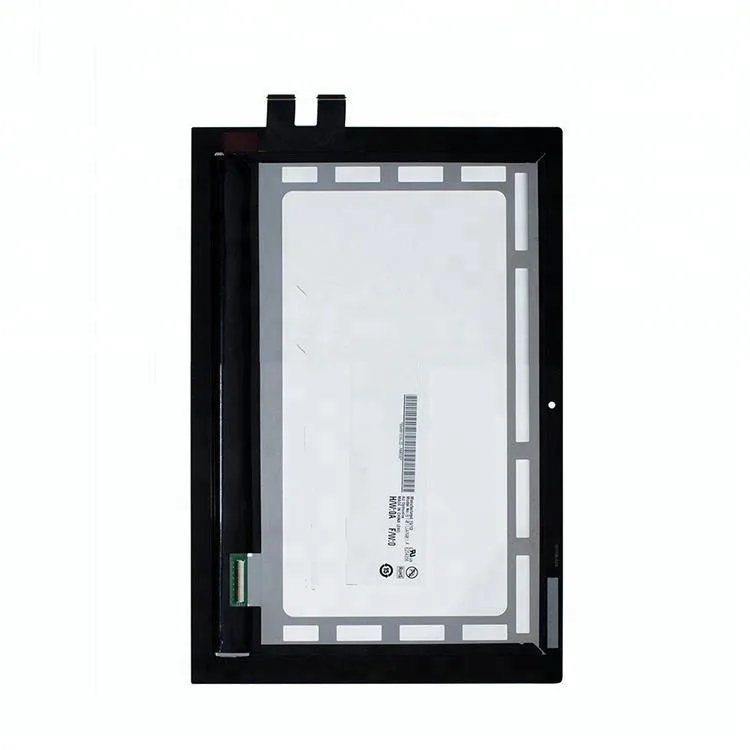 PriceOne}}
PriceOne}}
${ModelPrice.PriceMin}
{{else}}
${ModelPrice.PriceMin} — ${ModelPrice.PriceMax}
{{/if}}
{{if StockMainEnable}}
✔ in stock
{{/if}}
GT 1030 with Ryzen 3 3100 benchmarks in Ultra quality quality settings
Compare with
Select..AMD Radeon 530 Mobile — RUB 41,715AMD Radeon 540 Mobile — RUB 71,231AMD Radeon HD 6850 — RUB 13,052AMD Radeon HD 6870 — RUB 13,052AMD Radeon HD 6950 — ₽ 16,398amd Radeon HD 6970 — ₽ 19,611AMD Radeon HD 6990 — ₽ 45,847AMD Radeon HD 7750 — ₽ 9,183AMD Radeon HD 7750M — ₽ 56,276AMD RADEON HD 7790 — ₽ 9,773AMD RADEON HD 7850 — ₽ 16. ₽ ₽ 16. ₽ ₽ 16. ₽ ₽ 16. ₽ ₽ 16. — RUB 63,229AMD Radeon HD 7950 — RUB 9,773AMD Radeon HD 7950M — RUB 67,099AMD Radeon HD 7970 — RUB 19,611AMD Radeon HD 7970 GHz Edition — RUB 19,611AMD Radeon HD 7970M — RUB 70,772AMD0 Radeon HD 7,592 WX 7100 Mobile — RUB 128,491AMD Radeon R5 — RUB 46,569AMD Radeon R5 — RUB 45,979AMD Radeon R7 250 — RUB 6,231AMD Radeon R7 265 — RUB 97733AMD Radeon R7 370 — ₽ 13,249AMD Radeon R9 270 — ₽ 18,037AMD Radeon R9 280 — ₽ 22,957AMD RADEON R9 280X — ₽ 22.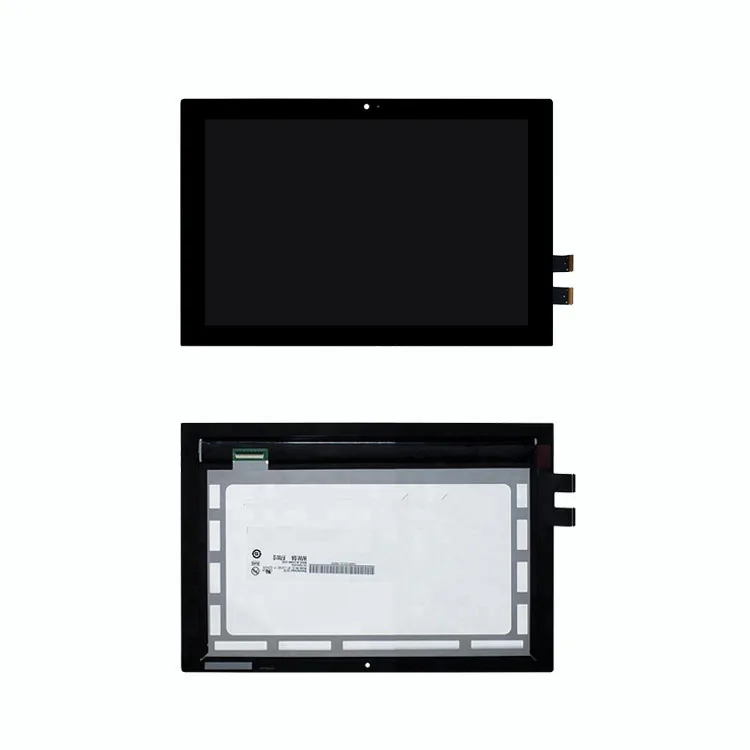 957AMD Radeon R9 285 — ₽ 24,924AMD RADEON R9 290 — ₽ 20.3.333AMD RADEN AMD Radeon R9 295×2 — ₽ 98,319AMD Radeon R9 380 — ₽ 19,611amd Radeon R9 380x — ₽ 15.020AMD RADEON R9 390 — ₽ 30,4999AMD RADEON R9 390X — ₽ 32,467AMD RADEON R9 Fury — ₽ 36.009.009.009.009AM AMD Radeon R9 M270X — RUB 66,639AMD Radeon R9 M280X — RUB 70,181AMD Radeon R9 M280X 2GB — RUB 70,181AMD Radeon R9M290X — RUB 79,298AMD Radeon R9 M380 — RUB 70,444AMD Radeon R9 Nano — RUB 100,287AMD Radeon RX 460 — RUB 9,183AMD Radeon RX 470 — RUB 22,432AMD Radeon RX 470 Mobile — RUB 78,905AMD Radeon RX04 RX04 Radeon RX04 480 Mobile — RUB 83,627AMD Radeon RX 540 Mobile — RUB 42,306AMD Radeon RX 550 — RUB 4,854AMD Radeon RX 550 Mobile — RUB 60,540AMD Radeon RX 5500 XT 4GB — RUB 11,085AMD Radeon RX 5500 XT 51D — RUB 05 Mobile — RUB 60,540AMD Radeon RX 560 — RUB 6,493AMD Radeon RX 560 Mobile — RUB 64,737AMD Radeon RX 5600 XT — RUB 18,300AMD Radeon RX 560X Mobile — RUB 42,043AMD Radeon RX 560X Mobile 2GB — RUB 7D Radeon RX 560X Mobile 2GB — RUB 7D 64.
957AMD Radeon R9 285 — ₽ 24,924AMD RADEON R9 290 — ₽ 20.3.333AMD RADEN AMD Radeon R9 295×2 — ₽ 98,319AMD Radeon R9 380 — ₽ 19,611amd Radeon R9 380x — ₽ 15.020AMD RADEON R9 390 — ₽ 30,4999AMD RADEON R9 390X — ₽ 32,467AMD RADEON R9 Fury — ₽ 36.009.009.009.009AM AMD Radeon R9 M270X — RUB 66,639AMD Radeon R9 M280X — RUB 70,181AMD Radeon R9 M280X 2GB — RUB 70,181AMD Radeon R9M290X — RUB 79,298AMD Radeon R9 M380 — RUB 70,444AMD Radeon R9 Nano — RUB 100,287AMD Radeon RX 460 — RUB 9,183AMD Radeon RX 470 — RUB 22,432AMD Radeon RX 470 Mobile — RUB 78,905AMD Radeon RX04 RX04 Radeon RX04 480 Mobile — RUB 83,627AMD Radeon RX 540 Mobile — RUB 42,306AMD Radeon RX 550 — RUB 4,854AMD Radeon RX 550 Mobile — RUB 60,540AMD Radeon RX 5500 XT 4GB — RUB 11,085AMD Radeon RX 5500 XT 51D — RUB 05 Mobile — RUB 60,540AMD Radeon RX 560 — RUB 6,493AMD Radeon RX 560 Mobile — RUB 64,737AMD Radeon RX 5600 XT — RUB 18,300AMD Radeon RX 560X Mobile — RUB 42,043AMD Radeon RX 560X Mobile 2GB — RUB 7D Radeon RX 560X Mobile 2GB — RUB 7D 64. 75 8,068AMD Radeon RX 570 Mobile — RUB 82,643AMD Radeon RX 5700 — RUB 22.89AMD Radeon RX 580X Mobile — RUB 85,726 AMD Radeon RX 590 — RUB 14,036 AMD Radeon RX 6600 XT4 — RUB 14,036 AMD Radeon RX 6600 XT4 — RUB 14,036 XT — RUB 31,418AMD Radeon RX 6800 — RUB 37,977AMD Radeon RX 6800 XT — RUB 42,568AMD Radeon RX 6900 XT — RUB 65,524AMD Radeon RX VEGA 10 — RUB 41,453AMD Radeon RX VEGA 3 — RX VEGA AMD 37.1 AMD Radeon RX VEGA 8 — RUB 39,420AMD Radeon RX Vega 56 — RUB 17,644AMD Radeon RX Vega 56 Mobile — RUB 103,567AMD Radeon RX Vega 64 — RUB 27,482AMD Radeon VII — RUB 43,552ATI Radeon HD 4870 — RUB 19,611NVIDIA GeForce GT 640 — ₽ 5,182NVIDIA GeForce GTS 450 — ₽ 13,052NVIDIA GeForce GTX 1050 — ₽ 8,461NVIDIA GeForce GTX 1050 Max-Q — ₽ 84,086NVIDIA GeForce GTX 1050 Mobile — ₽ 49,193NVIDIA GeForce GTX 1050 Mobile 2GB — ₽ 69,657NVIDIA GeForce GTX 1050 Ti — Rs. 8,461NVIDIA GeForce GTX 1050 Ti Max-Q — Rs. 83,299NVIDIA GeForce GTX 1050 Ti Mobile — Rs. — RUB 77,724NVIDIA GeForce GTX 1060 Mobile — RUB 64,737NVIDIA GeForce GTX 1070 — RUB 21,579NVIDIA GeForce GTX 1070 Max-Q — Rs.
75 8,068AMD Radeon RX 570 Mobile — RUB 82,643AMD Radeon RX 5700 — RUB 22.89AMD Radeon RX 580X Mobile — RUB 85,726 AMD Radeon RX 590 — RUB 14,036 AMD Radeon RX 6600 XT4 — RUB 14,036 AMD Radeon RX 6600 XT4 — RUB 14,036 XT — RUB 31,418AMD Radeon RX 6800 — RUB 37,977AMD Radeon RX 6800 XT — RUB 42,568AMD Radeon RX 6900 XT — RUB 65,524AMD Radeon RX VEGA 10 — RUB 41,453AMD Radeon RX VEGA 3 — RX VEGA AMD 37.1 AMD Radeon RX VEGA 8 — RUB 39,420AMD Radeon RX Vega 56 — RUB 17,644AMD Radeon RX Vega 56 Mobile — RUB 103,567AMD Radeon RX Vega 64 — RUB 27,482AMD Radeon VII — RUB 43,552ATI Radeon HD 4870 — RUB 19,611NVIDIA GeForce GT 640 — ₽ 5,182NVIDIA GeForce GTS 450 — ₽ 13,052NVIDIA GeForce GTX 1050 — ₽ 8,461NVIDIA GeForce GTX 1050 Max-Q — ₽ 84,086NVIDIA GeForce GTX 1050 Mobile — ₽ 49,193NVIDIA GeForce GTX 1050 Mobile 2GB — ₽ 69,657NVIDIA GeForce GTX 1050 Ti — Rs. 8,461NVIDIA GeForce GTX 1050 Ti Max-Q — Rs. 83,299NVIDIA GeForce GTX 1050 Ti Mobile — Rs. — RUB 77,724NVIDIA GeForce GTX 1060 Mobile — RUB 64,737NVIDIA GeForce GTX 1070 — RUB 21,579NVIDIA GeForce GTX 1070 Max-Q — Rs. 72,543NVIDIA GeForce GTX 1070 Mobile — Rs. 102,255NVIDIA GeForce GTX 1070 Ti — Rs. 121,801NVIDIA GeForce GTX 1080 Ti — ₽ 52,931NVIDIA GeForce GTX 1650 — ₽ 9,773NVIDIA GeForce GTX 1650 Max-Q — ₽ 81,266NVIDIA GeForce GTX 1650 Mobile — ₽ 75,494NVIDIA GeForce GTX 1650 SUPER — ₽ 10,494NVIDIA GeForce GTX 1660 — ₽ 14,430NVIDIA GeForce GTX 1660 SUPER — RUB 15,020NVIDIA GeForce GTX 1660 Ti — RUB 18,300NVIDIA GeForce GTX 1660 Ti Max-Q — RUB 77,724NVIDIA GeForce GTX 1660 Ti Mobile — RUB 115,307NVIDIA GeForce GTX 260 — RUB 29,450NVIDIA GeForce GTX 260 Core 216 — ₽ 19,611NVIDIA GeForce GTX 280 — ₽ 42,568NVIDIA GeForce GTX 285 — ₽ 16,332NVIDIA GeForce GTX 470 — ₽ 19,611NVIDIA GeForce GTX 480 — ₽ 32,729NVIDIA GeForce GTX 550 Ti — ₽ 13,052NVIDIA GeForce GTX 560 — ₽ 10,035NVIDIA GeForce GTX 560 Ti — ₽ 14,430NVIDIA GeForce GTX 570 — ₽ 22,891NVIDIA GeForce GTX 580 — ₽ 26,170NVIDIA GeForce GTX 590 — ₽ 45,847NVIDIA GeForce GTX 650 — ₽ 3,214NVIDIA GeForce GTX 650 Ti — ₽ 4,198NVIDIA GeForce GTX 650 Ti Boost — $11,085NVIDIA GeForce GTX 660 — $5,182NVIDIA GeForce GTX 660 Ti — $19,611NVIDIA GeForce GTX 660M — ₽ 64,737NVIDIA GeForce GTX 670 — ₽ 5,182NVIDIA GeForce GTX 670M — ₽ 69,394NVIDIA GeForce GTX 670MX — ₽ 69,394NVIDIA GeForce GTX 680 — ₽ 31,811NVIDIA GeForce GTX 680M — ₽ 71,034NVIDIA GeForce GTX 690 — ₽ 28,794 NVIDIA GeForce GTX 750 Ti — ₽ 18,300NVIDIA GeForce GTX 760 — ₽ 20,989NVIDIA GeForce GTX 760M — ₽ 67,951NVIDIA GeForce GTX 770 — ₽ 11,741NVIDIA GeForce GTX 770M — ₽ 72,149NVIDIA GeForce GTX 780 — ₽ 23,285NVIDIA GeForce GTX 780 Ti — ₽ 26,892NVIDIA GeForce GTX 780M — ₽ 76,216NVIDIA GeForce GTX 780M — ₽ 76,216NVIDIA GeForce GTX 950 — ₽ 5,838NVIDIA GeForce GTX 960 — ₽ 5,838NVIDIA GeForce GTX 960M — ₽ 69,919NVIDIA GeForce GTX 970 — ₽ 29,450NVIDIA GeForce GTX 970M — ₽ 81,922NVIDIA GeForce GTX 970M 6GB — ₽ 81,922NVIDIA GeForce GTX 980 — ₽ 16,332NVIDIA GeForce GTX 980 Mobile — ₽ 88,219NVIDIA GeForce GTX 980 Ti — ₽ 40,600NVIDIA GeForce GTX 980M — ₽ 88,219NVIDIA GeForce GTX 980MX — ₽ 88,219NVIDIA GeForce GTX TITAN — ₽ 42,634NVIDIA GeForce GTX TITAN BLACK — ₽ 65,524NVIDIA GeForce GTX TITAN X — ₽ 72,083 NVIDIA GeForce RTX 2060 — $22.
72,543NVIDIA GeForce GTX 1070 Mobile — Rs. 102,255NVIDIA GeForce GTX 1070 Ti — Rs. 121,801NVIDIA GeForce GTX 1080 Ti — ₽ 52,931NVIDIA GeForce GTX 1650 — ₽ 9,773NVIDIA GeForce GTX 1650 Max-Q — ₽ 81,266NVIDIA GeForce GTX 1650 Mobile — ₽ 75,494NVIDIA GeForce GTX 1650 SUPER — ₽ 10,494NVIDIA GeForce GTX 1660 — ₽ 14,430NVIDIA GeForce GTX 1660 SUPER — RUB 15,020NVIDIA GeForce GTX 1660 Ti — RUB 18,300NVIDIA GeForce GTX 1660 Ti Max-Q — RUB 77,724NVIDIA GeForce GTX 1660 Ti Mobile — RUB 115,307NVIDIA GeForce GTX 260 — RUB 29,450NVIDIA GeForce GTX 260 Core 216 — ₽ 19,611NVIDIA GeForce GTX 280 — ₽ 42,568NVIDIA GeForce GTX 285 — ₽ 16,332NVIDIA GeForce GTX 470 — ₽ 19,611NVIDIA GeForce GTX 480 — ₽ 32,729NVIDIA GeForce GTX 550 Ti — ₽ 13,052NVIDIA GeForce GTX 560 — ₽ 10,035NVIDIA GeForce GTX 560 Ti — ₽ 14,430NVIDIA GeForce GTX 570 — ₽ 22,891NVIDIA GeForce GTX 580 — ₽ 26,170NVIDIA GeForce GTX 590 — ₽ 45,847NVIDIA GeForce GTX 650 — ₽ 3,214NVIDIA GeForce GTX 650 Ti — ₽ 4,198NVIDIA GeForce GTX 650 Ti Boost — $11,085NVIDIA GeForce GTX 660 — $5,182NVIDIA GeForce GTX 660 Ti — $19,611NVIDIA GeForce GTX 660M — ₽ 64,737NVIDIA GeForce GTX 670 — ₽ 5,182NVIDIA GeForce GTX 670M — ₽ 69,394NVIDIA GeForce GTX 670MX — ₽ 69,394NVIDIA GeForce GTX 680 — ₽ 31,811NVIDIA GeForce GTX 680M — ₽ 71,034NVIDIA GeForce GTX 690 — ₽ 28,794 NVIDIA GeForce GTX 750 Ti — ₽ 18,300NVIDIA GeForce GTX 760 — ₽ 20,989NVIDIA GeForce GTX 760M — ₽ 67,951NVIDIA GeForce GTX 770 — ₽ 11,741NVIDIA GeForce GTX 770M — ₽ 72,149NVIDIA GeForce GTX 780 — ₽ 23,285NVIDIA GeForce GTX 780 Ti — ₽ 26,892NVIDIA GeForce GTX 780M — ₽ 76,216NVIDIA GeForce GTX 780M — ₽ 76,216NVIDIA GeForce GTX 950 — ₽ 5,838NVIDIA GeForce GTX 960 — ₽ 5,838NVIDIA GeForce GTX 960M — ₽ 69,919NVIDIA GeForce GTX 970 — ₽ 29,450NVIDIA GeForce GTX 970M — ₽ 81,922NVIDIA GeForce GTX 970M 6GB — ₽ 81,922NVIDIA GeForce GTX 980 — ₽ 16,332NVIDIA GeForce GTX 980 Mobile — ₽ 88,219NVIDIA GeForce GTX 980 Ti — ₽ 40,600NVIDIA GeForce GTX 980M — ₽ 88,219NVIDIA GeForce GTX 980MX — ₽ 88,219NVIDIA GeForce GTX TITAN — ₽ 42,634NVIDIA GeForce GTX TITAN BLACK — ₽ 65,524NVIDIA GeForce GTX TITAN X — ₽ 72,083 NVIDIA GeForce RTX 2060 — $22. 891NVIDIA GeForce RTX 2060 Mobile — ₽ 72,411NVIDIA GeForce RTX 2060 SUPER — ₽ 26,236NVIDIA GeForce RTX 2070 — ₽ 30,762NVIDIA GeForce RTX 2070 Max-Q — ₽ 99,434NVIDIA GeForce RTX 2070 Mobile — ₽ 113,077NVIDIA GeForce RTX 2070 SUPER — ₽ 32,729NVIDIA GeForce RTX 2080 — ₽ 45,454NVIDIA GeForce RTX 2080 Max-Q — ₽ 116,226NVIDIA GeForce RTX 2080 Mobile — ₽ 127,376NVIDIA GeForce RTX 2080 SUPER — ₽ 45,847NVIDIA GeForce RTX 2080 Ti — ₽ 77,855NVIDIA GeForce RTX 3050 — ₽ 13,118NVIDIA GeForce RTX 3050 Ti — $16,332NVIDIA GeForce RTX 3060 — $21,579NVIDIA GeForce RTX 3060 Ti — ₽ 26,170NVIDIA GeForce RTX 3070 — ₽ 32,729NVIDIA GeForce RTX 3070 Ti — ₽ 39,288NVIDIA GeForce RTX 3080 — ₽ 45,847NVIDIA GeForce RTX 3080 Ti — ₽ 52,406NVIDIA GeForce RTX 3090 — ₽ 98,319NVIDIA GeForce RTX 4050 — ₽ 13,118NVIDIA GeForce RTX 4060 — ₽ 21,579NVIDIA GeForce RTX 4060 Ti — ₽ 26,170NVIDIA GeForce RTX 4070 — ₽ 32,729NVIDIA GeForce RTX 4080 — ₽ 45,847NVIDIA GeForce RTX 4080 Ti — ₽ 52,406NVIDIA GeForce RTX 4090 — ₽ 98,319NVIDIA TITAN RTX — $163,909NVIDIA TITAN V — $196,704NVIDIA TITAN Xp — ₽ 78,642
891NVIDIA GeForce RTX 2060 Mobile — ₽ 72,411NVIDIA GeForce RTX 2060 SUPER — ₽ 26,236NVIDIA GeForce RTX 2070 — ₽ 30,762NVIDIA GeForce RTX 2070 Max-Q — ₽ 99,434NVIDIA GeForce RTX 2070 Mobile — ₽ 113,077NVIDIA GeForce RTX 2070 SUPER — ₽ 32,729NVIDIA GeForce RTX 2080 — ₽ 45,454NVIDIA GeForce RTX 2080 Max-Q — ₽ 116,226NVIDIA GeForce RTX 2080 Mobile — ₽ 127,376NVIDIA GeForce RTX 2080 SUPER — ₽ 45,847NVIDIA GeForce RTX 2080 Ti — ₽ 77,855NVIDIA GeForce RTX 3050 — ₽ 13,118NVIDIA GeForce RTX 3050 Ti — $16,332NVIDIA GeForce RTX 3060 — $21,579NVIDIA GeForce RTX 3060 Ti — ₽ 26,170NVIDIA GeForce RTX 3070 — ₽ 32,729NVIDIA GeForce RTX 3070 Ti — ₽ 39,288NVIDIA GeForce RTX 3080 — ₽ 45,847NVIDIA GeForce RTX 3080 Ti — ₽ 52,406NVIDIA GeForce RTX 3090 — ₽ 98,319NVIDIA GeForce RTX 4050 — ₽ 13,118NVIDIA GeForce RTX 4060 — ₽ 21,579NVIDIA GeForce RTX 4060 Ti — ₽ 26,170NVIDIA GeForce RTX 4070 — ₽ 32,729NVIDIA GeForce RTX 4080 — ₽ 45,847NVIDIA GeForce RTX 4080 Ti — ₽ 52,406NVIDIA GeForce RTX 4090 — ₽ 98,319NVIDIA TITAN RTX — $163,909NVIDIA TITAN V — $196,704NVIDIA TITAN Xp — ₽ 78,642
Change CPU to
Select.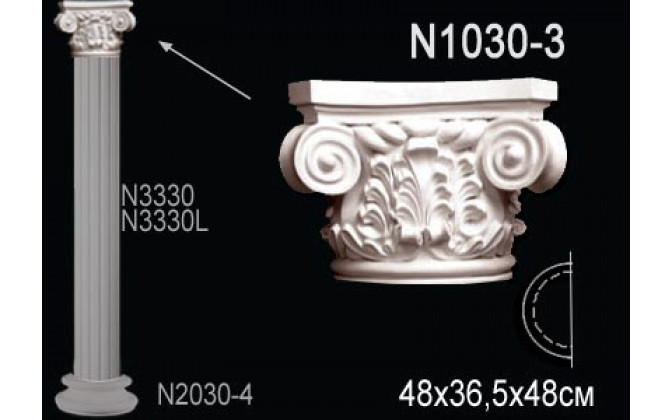 .AMD Athlon 5000 Dual-Core — RUB 6555.7AMD Athlon 5200 Dual-Core — RUB 1967AMD Athlon 64 X2 Dual Core 4200+ — RUB 8523.4 — RUB 23609.1AMD Athlon 64 X2 Dual Core 4800+ — RUB 30168.1AMD Athlon 64 X2 Dual Core 5000+ — RUB 21742.4AMD Athlon 64 X2 Dual Core 5200+ — RUB 3482.2AMD Athlon 64 X4 Dual Core 6DAM56 5400+ — RUB 3482.2AMD Athlon 64 X4 Dual Core 5400+ X2 Dual Core 5600+ — RUB 9835.2AMD Athlon 64 X2 Dual Core 5800+ — RUB 1639.1AMD Athlon 64 X2 Dual Core 6000+ — RUB 3013.9AMD Athlon 64 X2 Dual Core 6400+ — RUB 17050.1AMD Athlon 7550 Dual-Core — RUB 3935.4 AMD Athlon Dual Core 5000B — $ 6231.1AMD Athlon II X2 215 — $ 786.4AMD Athlon II X2 220 — $ 2111.3 II X2 255 — RUB 4277.8AMD Athlon II X2 260 — RUB 1311.1AMD Athlon II X2 265 — RUB 5436.1AMD Athlon II X2 270 — RUB 1573.5AMD Athlon II X2 B22 — RUB 2358AMD Athlon II X2AMD II2 X20. — ₽ 3217.2AMD Athlon II X3 425 — ₽ 6835.1AMD Athlon II X3 435 — ₽ 3278.8AMD Athlon II X3 440 — ₽ 3079.5AMD ATHLON II X3 445 — ₽ 5968.7AMD athlon II X3 450 — ₽ 2622.
.AMD Athlon 5000 Dual-Core — RUB 6555.7AMD Athlon 5200 Dual-Core — RUB 1967AMD Athlon 64 X2 Dual Core 4200+ — RUB 8523.4 — RUB 23609.1AMD Athlon 64 X2 Dual Core 4800+ — RUB 30168.1AMD Athlon 64 X2 Dual Core 5000+ — RUB 21742.4AMD Athlon 64 X2 Dual Core 5200+ — RUB 3482.2AMD Athlon 64 X4 Dual Core 6DAM56 5400+ — RUB 3482.2AMD Athlon 64 X4 Dual Core 5400+ X2 Dual Core 5600+ — RUB 9835.2AMD Athlon 64 X2 Dual Core 5800+ — RUB 1639.1AMD Athlon 64 X2 Dual Core 6000+ — RUB 3013.9AMD Athlon 64 X2 Dual Core 6400+ — RUB 17050.1AMD Athlon 7550 Dual-Core — RUB 3935.4 AMD Athlon Dual Core 5000B — $ 6231.1AMD Athlon II X2 215 — $ 786.4AMD Athlon II X2 220 — $ 2111.3 II X2 255 — RUB 4277.8AMD Athlon II X2 260 — RUB 1311.1AMD Athlon II X2 265 — RUB 5436.1AMD Athlon II X2 270 — RUB 1573.5AMD Athlon II X2 B22 — RUB 2358AMD Athlon II X2AMD II2 X20. — ₽ 3217.2AMD Athlon II X3 425 — ₽ 6835.1AMD Athlon II X3 435 — ₽ 3278.8AMD Athlon II X3 440 — ₽ 3079.5AMD ATHLON II X3 445 — ₽ 5968.7AMD athlon II X3 450 — ₽ 2622. 9AMD ATHLON II X3 455 — ₽ 7664.2AMD ATHLON II X3 460 — ₽ 3278.8AMD ATHO X4 620 — ₽ 3932.1AMD ATHLON 28 Athlon II X4 631 Quad-Core — $ 5247.2AMD Athlon II X4 635 — $ 4588AMD Athlon II X4 640 — $ 5243.9AMD Athlon II X4 641 Quad-Core — $ 6001.5 — ₽ 18168.4AMD Athlon X4 760K Quad Core — ₽ 3017.1AMD Athlon X4 840 — ₽ 5164.6AMD Athlon X4 845 — ₽ 3278.8AMD Athlon X4 860K — ₽ 4196.4AMD ATHLON X4 870K — ₽ 5246.5AMD Athlon X4 880K — ₽ 5902.4AMD ATHLON X4 950 — ₽ 3934.7AMD E2-3200 APU — ₽ 524.1AMD FX -4100 Quad -Core — ₽ 8526AMD FX -4130 QUAD -₽ 4984. FX-4170 Quad-Core — RUB 6558.3AMD FX-4200 Quad-Core — RUB 14968.3AMD FX-4300 Quad-Core — RUB 3501.9AMD FX-4350 Quad-Core — RUB 8526AMD FX-6200 Six-Core — RUB 22297.3FX -6300 Six-Core — RUB 3869.2AMD FX-6350 Six-Core — RUB 8526AMD FX-8120 Eight-Core — RUB 6558.3AMD FX-8150 Eight-Core — RUB 25153.8AMD FX-8300 Eight-Core — RUB 5285.9AMD 8320 Eight-Core — ₽ 5214.4AMD FX-8320E Eight-Core — ₽ 6484.9AMD FX-8350 Eight-Core — RUB 5246.5 AMD FX-8370 Eight-Core — RUB 8853.
9AMD ATHLON II X3 455 — ₽ 7664.2AMD ATHLON II X3 460 — ₽ 3278.8AMD ATHO X4 620 — ₽ 3932.1AMD ATHLON 28 Athlon II X4 631 Quad-Core — $ 5247.2AMD Athlon II X4 635 — $ 4588AMD Athlon II X4 640 — $ 5243.9AMD Athlon II X4 641 Quad-Core — $ 6001.5 — ₽ 18168.4AMD Athlon X4 760K Quad Core — ₽ 3017.1AMD Athlon X4 840 — ₽ 5164.6AMD Athlon X4 845 — ₽ 3278.8AMD Athlon X4 860K — ₽ 4196.4AMD ATHLON X4 870K — ₽ 5246.5AMD Athlon X4 880K — ₽ 5902.4AMD ATHLON X4 950 — ₽ 3934.7AMD E2-3200 APU — ₽ 524.1AMD FX -4100 Quad -Core — ₽ 8526AMD FX -4130 QUAD -₽ 4984. FX-4170 Quad-Core — RUB 6558.3AMD FX-4200 Quad-Core — RUB 14968.3AMD FX-4300 Quad-Core — RUB 3501.9AMD FX-4350 Quad-Core — RUB 8526AMD FX-6200 Six-Core — RUB 22297.3FX -6300 Six-Core — RUB 3869.2AMD FX-6350 Six-Core — RUB 8526AMD FX-8120 Eight-Core — RUB 6558.3AMD FX-8150 Eight-Core — RUB 25153.8AMD FX-8300 Eight-Core — RUB 5285.9AMD 8320 Eight-Core — ₽ 5214.4AMD FX-8320E Eight-Core — ₽ 6484.9AMD FX-8350 Eight-Core — RUB 5246.5 AMD FX-8370 Eight-Core — RUB 8853. 3AMD FX-8370E Eight-Core — RUB 11805.5 Phenom 8250e Triple-Core — ₽ 3082.1AMD Phenom 8450 Triple-Core — ₽ 1964.4AMD Phenom 8600 Triple-Core — ₽ 3475.6AMD Phenom 8600B Triple-Core — ₽ 3475.6AMD Phenom 8650 Triple-Core — ₽ 3278.8AMD Phenom 9100e Quad-Core — ₽ 2620.3AMD Phenom 9150e Quad-Core — ₽ 2620.3AMD Phenom 9350e Quad-Core — ₽ 221830AMD Phenom 9450e Quad-Core — ₽ 6887AMD Phenom 9500 Quad-Core — ₽ 3934.7AMD Phenom 9550 Quad-Core — ₽ 2620.3AMD Phenom 9600 Quad-Core — ₽ 3276.2AMD Phenom 9600B Quad-Core — ₽ 9654.2AMD Phenom 9650 Quad-Core — ₽AMD-Core 360 ₽ 3932.1AMD Phenom 9850 Quad -Core — ₽ 3279.5AMD Phenom 9950 Quad -Core — ₽ 11804.9AMD Phenom II X2 545 — ₽ 2884.6AMD Phenom II X2 550 — ₽ 3278.8AMD PHENOM II X2 555 — ₽ 9323AMD PEN 1967AMD Phenom II X2 B550.6AMD Phenom II X3 B73 — ₽ 4919.3AMD Phenom II X4 805 — ₽ 11412AMD Phenom II X4 810 — ₽ 7607.8AMD Phenom II X4 820 — ₽ 4916AMD Phenom II X4 840 — ₽ 5899.8AMD Phenom II X4 905E — ₽ 13 905E — ₽ 13 910 — ₽ 65559AMD Phenom II X4 910e — ₽ 10297AMD Phenom II X4 920 — ₽ 4393.
3AMD FX-8370E Eight-Core — RUB 11805.5 Phenom 8250e Triple-Core — ₽ 3082.1AMD Phenom 8450 Triple-Core — ₽ 1964.4AMD Phenom 8600 Triple-Core — ₽ 3475.6AMD Phenom 8600B Triple-Core — ₽ 3475.6AMD Phenom 8650 Triple-Core — ₽ 3278.8AMD Phenom 9100e Quad-Core — ₽ 2620.3AMD Phenom 9150e Quad-Core — ₽ 2620.3AMD Phenom 9350e Quad-Core — ₽ 221830AMD Phenom 9450e Quad-Core — ₽ 6887AMD Phenom 9500 Quad-Core — ₽ 3934.7AMD Phenom 9550 Quad-Core — ₽ 2620.3AMD Phenom 9600 Quad-Core — ₽ 3276.2AMD Phenom 9600B Quad-Core — ₽ 9654.2AMD Phenom 9650 Quad-Core — ₽AMD-Core 360 ₽ 3932.1AMD Phenom 9850 Quad -Core — ₽ 3279.5AMD Phenom 9950 Quad -Core — ₽ 11804.9AMD Phenom II X2 545 — ₽ 2884.6AMD Phenom II X2 550 — ₽ 3278.8AMD PHENOM II X2 555 — ₽ 9323AMD PEN 1967AMD Phenom II X2 B550.6AMD Phenom II X3 B73 — ₽ 4919.3AMD Phenom II X4 805 — ₽ 11412AMD Phenom II X4 810 — ₽ 7607.8AMD Phenom II X4 820 — ₽ 4916AMD Phenom II X4 840 — ₽ 5899.8AMD Phenom II X4 905E — ₽ 13 905E — ₽ 13 910 — ₽ 65559AMD Phenom II X4 910e — ₽ 10297AMD Phenom II X4 920 — ₽ 4393. 9AMD Phenom II X4 925 — ₽ 10493.7AMD Phenom II X4 940 — ₽ 7870.1AMD PHENOM II X4 945 — ₽ 3278.8AMD Phenomd Phenomd Phenomd Phenomd Phenomd Phenomd Phenomd Phenomd Phenomd Phenomd Phenomd Phenomd Phenomd Phenomd Phenomd Phenomd AMD Phenom II X4 960T — RUB 8854 AMD Phenom II X4 965 — RUB 3902.6AMD Phenom II X4 B95 — RUB 4784.8AMD Phenom II X4 B97 — ₽ 5899.8AMD Phenom II X6 1035T — ₽ 12396.5AMD Phenom II X6 1045T — ₽ 11478.3AMD Phenom II X6 1055T — ₽ 12134.2AMD Phenom II X6 1075T — ₽ 17052.7AMD PHENOM II X6 1090T — ₽ 259978.90T — ₽ 259978.90T ₽ 13117.3AMD Phenom X3 8550 — ₽ 11147AMD RYZEN 3 1200 — ₽ 6230.4AMD RYZEN 3 1300X — ₽ 8198.1AMD RYZEN 3 2200G — ₽ 6427.2AMD RYZEN 3 3100 — ₽ 5903.1AMD RYZEN 3 3200G — ₽ 6493.4AMD RYZEN 3300 — AMD Ryzen 5 1400 — $ 8789.1AMD Ryzen 5 1500X — $ 9503.3AMD Ryzen 5 1600 — $ 10165.8AMD Ryzen 5 1600X — $ 11701.3837.8AMD RYZEN 5 2600X — ₽ 13773.2AMD RYZEN 5 3400G — ₽ 9837.8AMD RYZEN 5 3500 — ₽ 9707.3AMD RYZEN 5 3500X — ₽ 10527.2AMD RYZEN 5 3600 — ₽ 13052.4AMD RYZEN 5 3600X — ₽ 16331.
9AMD Phenom II X4 925 — ₽ 10493.7AMD Phenom II X4 940 — ₽ 7870.1AMD PHENOM II X4 945 — ₽ 3278.8AMD Phenomd Phenomd Phenomd Phenomd Phenomd Phenomd Phenomd Phenomd Phenomd Phenomd Phenomd Phenomd Phenomd Phenomd Phenomd Phenomd AMD Phenom II X4 960T — RUB 8854 AMD Phenom II X4 965 — RUB 3902.6AMD Phenom II X4 B95 — RUB 4784.8AMD Phenom II X4 B97 — ₽ 5899.8AMD Phenom II X6 1035T — ₽ 12396.5AMD Phenom II X6 1045T — ₽ 11478.3AMD Phenom II X6 1055T — ₽ 12134.2AMD Phenom II X6 1075T — ₽ 17052.7AMD PHENOM II X6 1090T — ₽ 259978.90T — ₽ 259978.90T ₽ 13117.3AMD Phenom X3 8550 — ₽ 11147AMD RYZEN 3 1200 — ₽ 6230.4AMD RYZEN 3 1300X — ₽ 8198.1AMD RYZEN 3 2200G — ₽ 6427.2AMD RYZEN 3 3100 — ₽ 5903.1AMD RYZEN 3 3200G — ₽ 6493.4AMD RYZEN 3300 — AMD Ryzen 5 1400 — $ 8789.1AMD Ryzen 5 1500X — $ 9503.3AMD Ryzen 5 1600 — $ 10165.8AMD Ryzen 5 1600X — $ 11701.3837.8AMD RYZEN 5 2600X — ₽ 13773.2AMD RYZEN 5 3400G — ₽ 9837.8AMD RYZEN 5 3500 — ₽ 9707.3AMD RYZEN 5 3500X — ₽ 10527.2AMD RYZEN 5 3600 — ₽ 13052.4AMD RYZEN 5 3600X — ₽ 16331. AMD RYZEN 5 5600X — ₽ 19611.4AMD RYZEN 7 1700 — ₽ 12461.4AMD RYZEN 7 1700X — ₽ 13117.3AMD RYZEN 7 1800X — ₽ 16396.8AMD RYZEN 7 2700 — ₽ 16347AMD RYZEN 7 2700X — ₽ 20004.3AMD RYZEN 7, 3700X — ₽ ₽ ₽ ¦ 3800X — RUB 26170.4AMD Ryzen 7 5700X — RUB 19676.3AMD Ryzen 7 5800X — RUB 26170.4AMD Ryzen 7 5800X3D — RUB 29514.8AMD Ryzen 9 3900X — ₽ 32729.4AMD Ryzen 9 3950X — ₽ 49192.5AMD Ryzen 9 5900X — ₽ 32729.4AMD Ryzen 9 5950X — ₽ 46568.9AMD Ryzen Threadripper 1900X — ₽ 22955.8AMD Ryzen Threadripper 1920X — ₽ 27547.1AMD Ryzen Threadripper 1950X — ₽ 44600.5 AMD Ryzen Threadripper 2950X — ₽ 59030.3AMD Ryzen Threadripper 2990WX — ₽ 112814.1Intel Core i3-10100 — ₽ 8002Intel Core i3-10300 — ₽ 9379.4Intel Core i3-11100 — ₽ 8002Intel Core i3-11300 — ₽ 9379.4Intel Core i3-12100 — ₽ 8002Intel Core i3-12300 — ₽ 9379.4Intel Core i3-2100 @ 3.10GHz — ₽ 3934.7Intel Core i3-2102 @ 3.10GHz — RUB 3804.2Intel Core i3-2105 @ 3.10GHz — RUB 5246.5Intel Core i3-2120 @ 3.30GHz — RUB 1967.7Intel Core i3-2125 @ 3.30GHz — RUB 13052.
AMD RYZEN 5 5600X — ₽ 19611.4AMD RYZEN 7 1700 — ₽ 12461.4AMD RYZEN 7 1700X — ₽ 13117.3AMD RYZEN 7 1800X — ₽ 16396.8AMD RYZEN 7 2700 — ₽ 16347AMD RYZEN 7 2700X — ₽ 20004.3AMD RYZEN 7, 3700X — ₽ ₽ ₽ ¦ 3800X — RUB 26170.4AMD Ryzen 7 5700X — RUB 19676.3AMD Ryzen 7 5800X — RUB 26170.4AMD Ryzen 7 5800X3D — RUB 29514.8AMD Ryzen 9 3900X — ₽ 32729.4AMD Ryzen 9 3950X — ₽ 49192.5AMD Ryzen 9 5900X — ₽ 32729.4AMD Ryzen 9 5950X — ₽ 46568.9AMD Ryzen Threadripper 1900X — ₽ 22955.8AMD Ryzen Threadripper 1920X — ₽ 27547.1AMD Ryzen Threadripper 1950X — ₽ 44600.5 AMD Ryzen Threadripper 2950X — ₽ 59030.3AMD Ryzen Threadripper 2990WX — ₽ 112814.1Intel Core i3-10100 — ₽ 8002Intel Core i3-10300 — ₽ 9379.4Intel Core i3-11100 — ₽ 8002Intel Core i3-11300 — ₽ 9379.4Intel Core i3-12100 — ₽ 8002Intel Core i3-12300 — ₽ 9379.4Intel Core i3-2100 @ 3.10GHz — ₽ 3934.7Intel Core i3-2102 @ 3.10GHz — RUB 3804.2Intel Core i3-2105 @ 3.10GHz — RUB 5246.5Intel Core i3-2120 @ 3.30GHz — RUB 1967.7Intel Core i3-2125 @ 3.30GHz — RUB 13052. 2Intel Core0 @ 3.40GHz — $ 4590.6Intel Core i3-3210 @ 3.20GHz — $ 6558.3Intel Core i3-3220 @ 3.30GHz — $ 2289.1Intel Core i3-3225 @ 3.30GHz — $ 6558.3 Intel Core i3-3245 @ 3.40GHz — $ 5246.5 Intel Core i3-3250 @ 3.50GHz — $ 6230.4 Intel Core i3-4130 @ 3.40GHz — $ 9181.9 3.60GHz — ₽ 9181.9Intel Core i3-4170 @ 3.70GHz — Rs. 9837.8Intel Core i3-4330 @ 3.50GHz — Rs. 11805.5Intel Core i3-4340 @ 3.60GHz — Rs. @ 3.70GHz — $18361.9Intel Core i3-4370 @ 3.80GHz — $29513.5Intel Core i3-530 @ 2.93GHz — $1311.8Intel Core i3-540 @ 3.07GHz — $1377.4Intel Core i3-550 @ 3.20GHz — $1377.4 Intel Core i3-560 @ 3.33GHz — RUB 1966.4Intel Core i3-6098P @ 3.60GHz — RUB 8772Intel Core i3-6100 @ 3.70GHz — RUB 10895.2Intel Core i3-6300 @ 3.80GHz — RUB 9Intel Core i3-7320 @ 3.90GHz Intel Core i3-8100 @ 3.60GHz — RUB 8526 i3-9100F @ 3.60GHz — $ 6886.3Intel Core i3-9320 @ 3.70GHz — $ 10625.6Intel Core i3-9350KF @ 4.00GHz — $ 14691.537.4 Intel Core i5-10600K — $15533.7 Intel Core i5-11400 — $11937.4 Intel Core i5-11600K — $ 17184.
2Intel Core0 @ 3.40GHz — $ 4590.6Intel Core i3-3210 @ 3.20GHz — $ 6558.3Intel Core i3-3220 @ 3.30GHz — $ 2289.1Intel Core i3-3225 @ 3.30GHz — $ 6558.3 Intel Core i3-3245 @ 3.40GHz — $ 5246.5 Intel Core i3-3250 @ 3.50GHz — $ 6230.4 Intel Core i3-4130 @ 3.40GHz — $ 9181.9 3.60GHz — ₽ 9181.9Intel Core i3-4170 @ 3.70GHz — Rs. 9837.8Intel Core i3-4330 @ 3.50GHz — Rs. 11805.5Intel Core i3-4340 @ 3.60GHz — Rs. @ 3.70GHz — $18361.9Intel Core i3-4370 @ 3.80GHz — $29513.5Intel Core i3-530 @ 2.93GHz — $1311.8Intel Core i3-540 @ 3.07GHz — $1377.4Intel Core i3-550 @ 3.20GHz — $1377.4 Intel Core i3-560 @ 3.33GHz — RUB 1966.4Intel Core i3-6098P @ 3.60GHz — RUB 8772Intel Core i3-6100 @ 3.70GHz — RUB 10895.2Intel Core i3-6300 @ 3.80GHz — RUB 9Intel Core i3-7320 @ 3.90GHz Intel Core i3-8100 @ 3.60GHz — RUB 8526 i3-9100F @ 3.60GHz — $ 6886.3Intel Core i3-9320 @ 3.70GHz — $ 10625.6Intel Core i3-9350KF @ 4.00GHz — $ 14691.537.4 Intel Core i5-10600K — $15533.7 Intel Core i5-11400 — $11937.4 Intel Core i5-11600K — $ 17184. 6 ₽ 5246.5Intel Core i5-2310 @ 2.90GHz — ₽ 5245.9Intel Core i5-2320 @ 3.00GHz — ₽ 12806.4Intel Core i5-2380P @ 3.10GHz — ₽ 5902.4Intel Core i5-2400 @ 3.10GHz — ₽ tel5 Core508.9 2400S @ 2.50GHz — $4309.3 Intel Core i5-2405S @ 2.50GHz — $10783Intel Core i5-2450P @ 3.20GHz — $ 5902.4Intel Core i5-2500 @ 3.30GHz — $6886.3 Intel Core i5-2500S @ 2.70GHz — ₽ 4918.6Intel Core i5-2550K @ 3.40GHz — Rs. 8526Intel Core i5-3330 @ 3.00GHz — Rs. 6558.3Intel Core i5-3330S @ 2.70GHz — Rs. 2.80GHz — $ 9837.8 Intel Core i5-3350P @ 3.10GHz — $ 11149.6 Intel Core i5-3450 @ 3.10GHz — $ 8394.9 Intel Core i5-3470S @ 2.90GHz — RUB 9188.5 Intel Core i5-3475S @ 2.90GHz — RUB 9412.2 GHz — ₽ 9181.9Intel Core i5-3570K @ 3.40GHz — RUB 9444.3Intel Core i5-3570S @ 3.10GHz — RUB 18693.2Intel Core i5-4430 @ 3.00GHz — RUB 11805.5Intel Core i5-4430S @ 2.70-44Intel Core i5-4430S @ 2.70-44Intel Core05 @ 3.10GHz — $ 11149.6Intel Core i5-4440S @ 2.80GHz — $ 30366.2Intel Core i5-4460 @ 3.20GHz — $ 11149.6Intel Core i5-4460S @ 2.
6 ₽ 5246.5Intel Core i5-2310 @ 2.90GHz — ₽ 5245.9Intel Core i5-2320 @ 3.00GHz — ₽ 12806.4Intel Core i5-2380P @ 3.10GHz — ₽ 5902.4Intel Core i5-2400 @ 3.10GHz — ₽ tel5 Core508.9 2400S @ 2.50GHz — $4309.3 Intel Core i5-2405S @ 2.50GHz — $10783Intel Core i5-2450P @ 3.20GHz — $ 5902.4Intel Core i5-2500 @ 3.30GHz — $6886.3 Intel Core i5-2500S @ 2.70GHz — ₽ 4918.6Intel Core i5-2550K @ 3.40GHz — Rs. 8526Intel Core i5-3330 @ 3.00GHz — Rs. 6558.3Intel Core i5-3330S @ 2.70GHz — Rs. 2.80GHz — $ 9837.8 Intel Core i5-3350P @ 3.10GHz — $ 11149.6 Intel Core i5-3450 @ 3.10GHz — $ 8394.9 Intel Core i5-3470S @ 2.90GHz — RUB 9188.5 Intel Core i5-3475S @ 2.90GHz — RUB 9412.2 GHz — ₽ 9181.9Intel Core i5-3570K @ 3.40GHz — RUB 9444.3Intel Core i5-3570S @ 3.10GHz — RUB 18693.2Intel Core i5-4430 @ 3.00GHz — RUB 11805.5Intel Core i5-4430S @ 2.70-44Intel Core i5-4430S @ 2.70-44Intel Core05 @ 3.10GHz — $ 11149.6Intel Core i5-4440S @ 2.80GHz — $ 30366.2Intel Core i5-4460 @ 3.20GHz — $ 11149.6Intel Core i5-4460S @ 2. 90GHz — $ 43288.7 Intel Core i5-4570S @ 2.90GHz — $14536.7 Intel Core i5-4590 @ 3.30GHz — $12133.5Intel Core i5-4590S @ 3.00GHz — $12986.2 3.40GHz — ₽ 16396.8Intel Core i5-4670R @ 3.00GHz — Rs. 18102.8Intel Core i5-4690 @ 3.50GHz — Rs. 13117.3Intel Core i5-4690K @ 3.50GHz — Rs. @ 3.10GHz — $ 26235.3 Intel Core i5-6400 @ 2.70GHz — $ 13117.3 Intel Core i5-6402P @ 2.80GHz — $ 12461.4 Intel Core i5-650 @ 3.20GHz — $ 6558.3 Intel Core i5-655K @ 3.20GHz — RUB 3934.7 Intel Core i5-660 @ 3.33GHz — RUB 3213.9 Intel Core i5-6600 @ 3.30GHz — RUB 14429.148.3Intel Core i5-661 @ 3.33GHz — Rs. 6558.3Intel Core i5-670 @ 3.47GHz — Rs. 5902.4Intel Core i5-680 @ 3.60GHz — Rs. @ 2.67GHz — $ 10527.2 Intel Core i5-7500 @ 3.40GHz — $ 13773.2 Intel Core i5-760 @ 2.80GHz — $ 6558.3 Intel Core i5-7600 @ 3.50GHz — $ 15739.6 Intel Core i5-7640X @ 4.00GHz — $16396.8 Intel Core i5-8400 @ 2.80GHz — $13117.3Intel Core i5-8500 @ 3.00GHz — $15676 GHz — ₽ 24770.1Intel Core i5-9400 @ 2.90GHz — $ 11149.6Intel Core i5-9400F @ 2.
90GHz — $ 43288.7 Intel Core i5-4570S @ 2.90GHz — $14536.7 Intel Core i5-4590 @ 3.30GHz — $12133.5Intel Core i5-4590S @ 3.00GHz — $12986.2 3.40GHz — ₽ 16396.8Intel Core i5-4670R @ 3.00GHz — Rs. 18102.8Intel Core i5-4690 @ 3.50GHz — Rs. 13117.3Intel Core i5-4690K @ 3.50GHz — Rs. @ 3.10GHz — $ 26235.3 Intel Core i5-6400 @ 2.70GHz — $ 13117.3 Intel Core i5-6402P @ 2.80GHz — $ 12461.4 Intel Core i5-650 @ 3.20GHz — $ 6558.3 Intel Core i5-655K @ 3.20GHz — RUB 3934.7 Intel Core i5-660 @ 3.33GHz — RUB 3213.9 Intel Core i5-6600 @ 3.30GHz — RUB 14429.148.3Intel Core i5-661 @ 3.33GHz — Rs. 6558.3Intel Core i5-670 @ 3.47GHz — Rs. 5902.4Intel Core i5-680 @ 3.60GHz — Rs. @ 2.67GHz — $ 10527.2 Intel Core i5-7500 @ 3.40GHz — $ 13773.2 Intel Core i5-760 @ 2.80GHz — $ 6558.3 Intel Core i5-7600 @ 3.50GHz — $ 15739.6 Intel Core i5-7640X @ 4.00GHz — $16396.8 Intel Core i5-8400 @ 2.80GHz — $13117.3Intel Core i5-8500 @ 3.00GHz — $15676 GHz — ₽ 24770.1Intel Core i5-9400 @ 2.90GHz — $ 11149.6Intel Core i5-9400F @ 2. 90GHz — $ 11149.6Intel Core i5-9600K @ 3.70GHz — $ 18364.5 i7-11700K — $ 26891.9Intel Core i7-12700K — $ 30826.6Intel Core i7-2600 @ 3.40GHz — $ 9837.2 -2700K @ 3.50GHz — $13117.3Intel Core i7-3770 @ 3.40GHz — $11740Intel Core i7-3770K @ 3.50GHz — $16330.6Intel Core i7-3770S @ 3.10GHz — $13117.3Intel Core i7-3820 13117.3Intel Core i7-3930K @ 3.20GHz — RUB 26169.1Intel Core i7-3960X @ 3.30GHz — RUB 52471.3Intel Core i7-3970X @ 3.50GHz — RUB 62572.2Intel Core i7-4770 @ 3.40GHz — RUB 15740.9Intel Core i7-4770K 20tel Core135 3.20GHz — RUB 22470.5 Intel Core i7-4820K @ 3.70GHz — RUB 32794.3 Intel Core i7-4930K @ 3.40GHz — RUB 26169.1514.8Intel Core i7-5820K @ 3.30GHz — RUB 19676.3Intel Core i7-5930K @ 3.50GHz — RUB 32728.1Intel Core i7-5960X @ 3.00GHz — RUB 50503.6Intel Core i7-6700 @ 3.40GHz — RUB 28444 Intel Core i7-6800K @ 3.40GHz — RUB 27547.1 Intel Core i7-6850K @ 3.60GHz — RUB 36073.8 Intel Core i7-7700 @ 3.60GHz — RUB 21325.3 Intel Core i7-7700K @ 4.20GHz — RUB 23283.8 Intel Core i7-7740X @ 4.
90GHz — $ 11149.6Intel Core i5-9600K @ 3.70GHz — $ 18364.5 i7-11700K — $ 26891.9Intel Core i7-12700K — $ 30826.6Intel Core i7-2600 @ 3.40GHz — $ 9837.2 -2700K @ 3.50GHz — $13117.3Intel Core i7-3770 @ 3.40GHz — $11740Intel Core i7-3770K @ 3.50GHz — $16330.6Intel Core i7-3770S @ 3.10GHz — $13117.3Intel Core i7-3820 13117.3Intel Core i7-3930K @ 3.20GHz — RUB 26169.1Intel Core i7-3960X @ 3.30GHz — RUB 52471.3Intel Core i7-3970X @ 3.50GHz — RUB 62572.2Intel Core i7-4770 @ 3.40GHz — RUB 15740.9Intel Core i7-4770K 20tel Core135 3.20GHz — RUB 22470.5 Intel Core i7-4820K @ 3.70GHz — RUB 32794.3 Intel Core i7-4930K @ 3.40GHz — RUB 26169.1514.8Intel Core i7-5820K @ 3.30GHz — RUB 19676.3Intel Core i7-5930K @ 3.50GHz — RUB 32728.1Intel Core i7-5960X @ 3.00GHz — RUB 50503.6Intel Core i7-6700 @ 3.40GHz — RUB 28444 Intel Core i7-6800K @ 3.40GHz — RUB 27547.1 Intel Core i7-6850K @ 3.60GHz — RUB 36073.8 Intel Core i7-7700 @ 3.60GHz — RUB 21325.3 Intel Core i7-7700K @ 4.20GHz — RUB 23283.8 Intel Core i7-7740X @ 4. 30GHz — RUB 22890.3 GHz — ₽ 60998Intel Core i7-8086K @ 4.00GHz — Rs. Intel Core i7-8700 @ 3.70GHz -930 @ 2.80GHz — $3934.7Intel Core i7-940 @ 2.93GHz — $4637.2Intel Core i7-950 @ 3.07GHz — $16069.6Intel Core i7-960 @ 3.20GHz — $6558.3Intel Core i7-965 @ 3.20GHz — $ 9181.9Intel Core i7-970 @ 3.20GHz — $ 9837.2Intel Core i7-9700 @ 3.00GHz — $ 21644 Intel Core i7-975 @ 3.33GHz — RUB 11805.5 Intel Core i7-980 @ 3.33GHz — RUB 13116.7 Intel Core i7-980X @ 3.33GHz — RUB 14428.5 ₽ 38698.1Intel Core i9-11900K — ₽ 32007.9Intel Core i9-12900K — ₽ 38697.4Intel Core i9-7900X @ 3.30GHz — ₽
30GHz — RUB 22890.3 GHz — ₽ 60998Intel Core i7-8086K @ 4.00GHz — Rs. Intel Core i7-8700 @ 3.70GHz -930 @ 2.80GHz — $3934.7Intel Core i7-940 @ 2.93GHz — $4637.2Intel Core i7-950 @ 3.07GHz — $16069.6Intel Core i7-960 @ 3.20GHz — $6558.3Intel Core i7-965 @ 3.20GHz — $ 9181.9Intel Core i7-970 @ 3.20GHz — $ 9837.2Intel Core i7-9700 @ 3.00GHz — $ 21644 Intel Core i7-975 @ 3.33GHz — RUB 11805.5 Intel Core i7-980 @ 3.33GHz — RUB 13116.7 Intel Core i7-980X @ 3.33GHz — RUB 14428.5 ₽ 38698.1Intel Core i9-11900K — ₽ 32007.9Intel Core i9-12900K — ₽ 38697.4Intel Core i9-7900X @ 3.30GHz — ₽
.5Intel Core i9-7920X @ 2.90GHz — $ 71932.6 Intel Core i9-7940X @ 3.10GHz — $ 78191.2 Intel Core i9-7960X @ 2.80GHz — $ 131179.3 i9-9900K @ 3.60GHz — ₽ 54767Intel Core2 Duo E4300 @ 1.80GHz — ₽ 10359.9Intel Core2 Duo E4400 @ 2.00GHz — ₽ 587Intel Core2 Duo E4500 @ 2.20GHz — ₽ 2622.9Intel Core2 Duo E4600 @ 2.40GHz — ₽ 10359.9Intel Core2 Duo E4700 @ 2.60GHz — ₽ 6559Intel Core2 Duo E6300 @ 1.86GHz — ₽ 852Intel Core2 Duo E6320 @ 1. 86GHz — ₽ 3278.8Intel Core2 Duo E6400 @ 2.13GHz — ₽ 1308.5Intel Core2 Duo E6420 @ 2.13GHz — ₽ 3278.8Intel Core2 Duo E6550 @ 2.33GHz — ₽ 980.6Intel Core2 Duo E6600 @ 2.40GHz — ₽ 983.2Intel Core2 Duo E6700 @ 2.66GHz — ₽ 1967Intel Core2 Duo E6750 @ 2.66GHz — ₽ 849.4Intel Core2 Duo E6850 @ 3.00GHz — ₽ 3278.8Intel Core2 Duo E7200 @ 2.53GHz — ₽ 4919.3 Intel Core2 Duo E7300 @ 2.66GHz — $1311.1 Intel Core2 Duo E7400 @ 2.80GHz — $1901.5 Intel Core2 Duo E7500 @ 2.93GHz — $ 983.2 Intel Core2 Duo E8300 @ 2.83GHz — RUB 1311.1Intel Core2 Duo E8400 @ 3.00GHz — RUB 642.1Intel Core2 Duo E8500 @ 3.16GHz — RUB 2622.9Intel Core2 Duo E8600 @ 3.33GHz — ₽ 3278.8Intel Core2 Extreme Q6800 @ 2.93GHz — ₽ 73788.8Intel Core2 Extreme Q6850 @ 3.00GHz — ₽ 98119.4Intel Core2 Extreme X6800 @ 2.93GHz — ₽ 17292.1Intel Core2 Extreme X9650 @ 3.00GHz — ₽ 59621.3 Intel Core2 Extreme X9770 @ 3.20GHz — ₽ 105531Intel Core2 Extreme X9775 @ 3.20GHz — ₽ 118452.3Intel Core2 Quad Q6600 @ 2.40GHz — ₽ 2622.3Intel Core2 Quad Q6700 @ 2.66GHz — ₽ 2950.
86GHz — ₽ 3278.8Intel Core2 Duo E6400 @ 2.13GHz — ₽ 1308.5Intel Core2 Duo E6420 @ 2.13GHz — ₽ 3278.8Intel Core2 Duo E6550 @ 2.33GHz — ₽ 980.6Intel Core2 Duo E6600 @ 2.40GHz — ₽ 983.2Intel Core2 Duo E6700 @ 2.66GHz — ₽ 1967Intel Core2 Duo E6750 @ 2.66GHz — ₽ 849.4Intel Core2 Duo E6850 @ 3.00GHz — ₽ 3278.8Intel Core2 Duo E7200 @ 2.53GHz — ₽ 4919.3 Intel Core2 Duo E7300 @ 2.66GHz — $1311.1 Intel Core2 Duo E7400 @ 2.80GHz — $1901.5 Intel Core2 Duo E7500 @ 2.93GHz — $ 983.2 Intel Core2 Duo E8300 @ 2.83GHz — RUB 1311.1Intel Core2 Duo E8400 @ 3.00GHz — RUB 642.1Intel Core2 Duo E8500 @ 3.16GHz — RUB 2622.9Intel Core2 Duo E8600 @ 3.33GHz — ₽ 3278.8Intel Core2 Extreme Q6800 @ 2.93GHz — ₽ 73788.8Intel Core2 Extreme Q6850 @ 3.00GHz — ₽ 98119.4Intel Core2 Extreme X6800 @ 2.93GHz — ₽ 17292.1Intel Core2 Extreme X9650 @ 3.00GHz — ₽ 59621.3 Intel Core2 Extreme X9770 @ 3.20GHz — ₽ 105531Intel Core2 Extreme X9775 @ 3.20GHz — ₽ 118452.3Intel Core2 Quad Q6600 @ 2.40GHz — ₽ 2622.3Intel Core2 Quad Q6700 @ 2.66GHz — ₽ 2950. 9Intel Core2 Quad Q8200 @ 2.33GHz — ₽ 1507.9Intel Core2 Quad Q8300 @ 2.50GHz — RUB 3278.8Intel Core2 Quad Q8400 @ 2.66GHz — RUB 6526.2Intel Core2 Quad Q9300 @ 2.50GHz — ₽ 3278.8Intel Core2 Quad Q9400 @ 2.66GHz — ₽ 2228.7Intel Core2 Quad Q9450 @ 2.66GHz — ₽ 21972.7Intel Core2 Quad Q9500 @ 2.83GHz — ₽ 2295Intel Core2 Quad Q9505 @ 2.83GHz — ₽ 12462.1Intel Core2 Quad Q9550 @ 2.83GHz — ₽ 3213.3Intel Core2 Quad Q9650 @ 3.00GHz — ₽ 4576.9Intel Pentium G2010 @ 2.80GHz — ₽ 2288.4Intel Pentium G2020 @ 2.90GHz — ₽ 2155.3Intel Pentium G2030 @ 3.00GHz — ₽ 2688.5Intel Pentium G2120 @ 3.10GHz — ₽ 3016.5Intel Pentium G2130 @ 3.20GHz — ₽ 3278.8Intel Pentium G2140 @ 3.30GHz — ₽ 3278.8Intel Pentium G3220 @ 3.00GHz — ₽ 7867.5Intel Pentium G3240 @ 3.10GHz — ₽ 5246.5Intel Pentium G3250 @ 3.20GHz — ₽ 7214.2Intel Pentium G3258 @ 3.20GHz — ₽ 11693.4Intel Pentium G3260 @ 3.30GHz — ₽ 6886.3Intel Pentium G3420 @ 3.20GHz — ₽ 7214.2Intel Pentium G3430 @ 3.30GHz — ₽ 5902.4Intel Pentium G3440 @ 3.30GHz — ₽ 10490.5Intel Pentium G3450 @ 3.
9Intel Core2 Quad Q8200 @ 2.33GHz — ₽ 1507.9Intel Core2 Quad Q8300 @ 2.50GHz — RUB 3278.8Intel Core2 Quad Q8400 @ 2.66GHz — RUB 6526.2Intel Core2 Quad Q9300 @ 2.50GHz — ₽ 3278.8Intel Core2 Quad Q9400 @ 2.66GHz — ₽ 2228.7Intel Core2 Quad Q9450 @ 2.66GHz — ₽ 21972.7Intel Core2 Quad Q9500 @ 2.83GHz — ₽ 2295Intel Core2 Quad Q9505 @ 2.83GHz — ₽ 12462.1Intel Core2 Quad Q9550 @ 2.83GHz — ₽ 3213.3Intel Core2 Quad Q9650 @ 3.00GHz — ₽ 4576.9Intel Pentium G2010 @ 2.80GHz — ₽ 2288.4Intel Pentium G2020 @ 2.90GHz — ₽ 2155.3Intel Pentium G2030 @ 3.00GHz — ₽ 2688.5Intel Pentium G2120 @ 3.10GHz — ₽ 3016.5Intel Pentium G2130 @ 3.20GHz — ₽ 3278.8Intel Pentium G2140 @ 3.30GHz — ₽ 3278.8Intel Pentium G3220 @ 3.00GHz — ₽ 7867.5Intel Pentium G3240 @ 3.10GHz — ₽ 5246.5Intel Pentium G3250 @ 3.20GHz — ₽ 7214.2Intel Pentium G3258 @ 3.20GHz — ₽ 11693.4Intel Pentium G3260 @ 3.30GHz — ₽ 6886.3Intel Pentium G3420 @ 3.20GHz — ₽ 7214.2Intel Pentium G3430 @ 3.30GHz — ₽ 5902.4Intel Pentium G3440 @ 3.30GHz — ₽ 10490.5Intel Pentium G3450 @ 3. 40GHz — ₽ 6558.3Intel Pentium G3460 @ 3.50GHz — ₽ 18903Intel Pentium G3470 @ 3.60GHz — ₽ 6840.4Intel Pentium G4400 @ 3.30GHz — ₽ 5246.5Intel Pentium G4500 @ 3.50GHz — ₽ 5592.2Intel Pentium G4520 @ 3.60GHz — ₽ 7273.3Intel Pentium G4560 @ 3.50GHz — ₽ 6763.6Intel Pentium G4600 @ 3.60GHz — ₽ 6558.3Intel Pentium G4620 @ 3.70GHz — ₽ 6943.4Intel Pentium G640 @ 2.80GHz — ₽ 1639.1Intel Pentium G645 @ 2.90GHz — ₽ 6231.1Intel Pentium G840 @ 2.80GHz — ₽ 2295Intel Pentium G850 @ 2.90GHz — ₽ 1967Intel Pentium G860 @ 3.00GHz — ₽ 1967Intel Pentium G870 @ 3.10GHz — ₽ 6362.2Intel Pentium Gold G5400 @ 3.70GHz — ₽ 8123.3Intel Pentium Gold G5500 @ 3.80GHz — ₽ 6580Intel Pentium Gold G5600 @ 3.90GHz — ₽ 6618
40GHz — ₽ 6558.3Intel Pentium G3460 @ 3.50GHz — ₽ 18903Intel Pentium G3470 @ 3.60GHz — ₽ 6840.4Intel Pentium G4400 @ 3.30GHz — ₽ 5246.5Intel Pentium G4500 @ 3.50GHz — ₽ 5592.2Intel Pentium G4520 @ 3.60GHz — ₽ 7273.3Intel Pentium G4560 @ 3.50GHz — ₽ 6763.6Intel Pentium G4600 @ 3.60GHz — ₽ 6558.3Intel Pentium G4620 @ 3.70GHz — ₽ 6943.4Intel Pentium G640 @ 2.80GHz — ₽ 1639.1Intel Pentium G645 @ 2.90GHz — ₽ 6231.1Intel Pentium G840 @ 2.80GHz — ₽ 2295Intel Pentium G850 @ 2.90GHz — ₽ 1967Intel Pentium G860 @ 3.00GHz — ₽ 1967Intel Pentium G870 @ 3.10GHz — ₽ 6362.2Intel Pentium Gold G5400 @ 3.70GHz — ₽ 8123.3Intel Pentium Gold G5500 @ 3.80GHz — ₽ 6580Intel Pentium Gold G5600 @ 3.90GHz — ₽ 6618
Change Variant To
Select..ASL GT 1030 BattleASL GT 1030 SkynetASL GT 1030 WarhawkASUS GT 1030ASUS GT 1030 Silent BRKASUS GT 1030 Silent CSMASUS PHOENIX GT 1030ASUS PHOENIX GT 1030 OCBIOSTAR GT 1030Colorful GT 1030Colorful GT 1030 0DBColorful GT 1030 Gold EditionColorful GT 1030 Gold Edition V2Colorful GT 1030 Gold Edition V3Colorful GT 1030 Low ProfileEMTEK HV GT 1030EMTEK XENON GT 1030EVGA GT 1030 SCEVGA GT 1030 SC Low ProfileEVGA GT 1030 SC Passive Low ProfileGALAX GT 1030GALAX GT 1030 EXOC WhiteGALAX GT 1030 TigerGIGABYTE GT 1030 Low ProfileGIGABYTE GT 1030 OCGIGABYTE GT 1030 Silent Low ProfileGainward GT 1030 SilentFXGainward GT 1030 WhirlwindGainward GT 1030 WindwardInno3D GT 1030 0dBKFA2 GT 1030KFA2 GT 1030 EXOC WhiteKUROTOSHIKOU GT 1030 Low ProfileKUROTOSHIKOU GT 1030 Low Profile OCLeadtek WinFast GT 1030MAXSUN GT 1030 Hammer M. 4MAXSUN GT 1030 TransformerMAXSUN GT 1030 Transformers IIMAXSUN GT 1030 Transformers M.2MAXSUN GT 1030 Transformers M. 3MAXSUN GT 1030V TransformersMSI GT 1030 AERO ITX OCM SI GT 1030 Low Profile OCMSI GT 1030 Low Profile OCV1MSI GT 1030 Low Profile OCV2MSI GT 1030 Low Profile Passive OCMSI GT 1030 Low Profile Passive OCV1MSI GT 1030 OCMSI GT 1030 OCMSI GT 1030 OCV1Manli GT 1030 Low ProfileONDA GT 1030 Model-DONDA GT 1030 Model- D v2.0ONDA GT 1030 Model-VPNY GT 1030Palit GT 1030Palit GT 1030 KalmXPalit GT 1030 Low ProfileYeston GT 1030 Speed EditionZOTAC GT 1030ZOTAC GT 1030 Low ProfileZOTAC GT 1030 Low ProfileZOTAC GT 1030 Thunder MAZOTAC GT 1030 Thunder TSI MAZOTAC Zone Edition GT 10300009
4MAXSUN GT 1030 TransformerMAXSUN GT 1030 Transformers IIMAXSUN GT 1030 Transformers M.2MAXSUN GT 1030 Transformers M. 3MAXSUN GT 1030V TransformersMSI GT 1030 AERO ITX OCM SI GT 1030 Low Profile OCMSI GT 1030 Low Profile OCV1MSI GT 1030 Low Profile OCV2MSI GT 1030 Low Profile Passive OCMSI GT 1030 Low Profile Passive OCV1MSI GT 1030 OCMSI GT 1030 OCMSI GT 1030 OCV1Manli GT 1030 Low ProfileONDA GT 1030 Model-DONDA GT 1030 Model- D v2.0ONDA GT 1030 Model-VPNY GT 1030Palit GT 1030Palit GT 1030 KalmXPalit GT 1030 Low ProfileYeston GT 1030 Speed EditionZOTAC GT 1030ZOTAC GT 1030 Low ProfileZOTAC GT 1030 Low ProfileZOTAC GT 1030 Thunder MAZOTAC GT 1030 Thunder TSI MAZOTAC Zone Edition GT 10300009
Desired tuning quality
Select..Ultra quality — MSAA, HBAO, and advanced shadowsHigh quality — No MSAA, HBAO, or advanced shadowsMedium qualityLow quality
1030/3 LuceSolara 1030 1030/3
Luce Solara 1030 1030/3
5928
₽
Add to cart
In the cart
Go
Product code:
59601
Code:
1030/3
Brand:
LuceSolara
Share
Favorites
Favorites
Compare
Add to favorites
Favorites
Compare
5,928
₽
Best Price Guarantee
Add to Cart
In the cart
Go
Pickup from the warehouse:
today, October 8 — free of charge
Local delivery:
Denver
We deliver to Denver, check the cost and delivery time with the manager.
